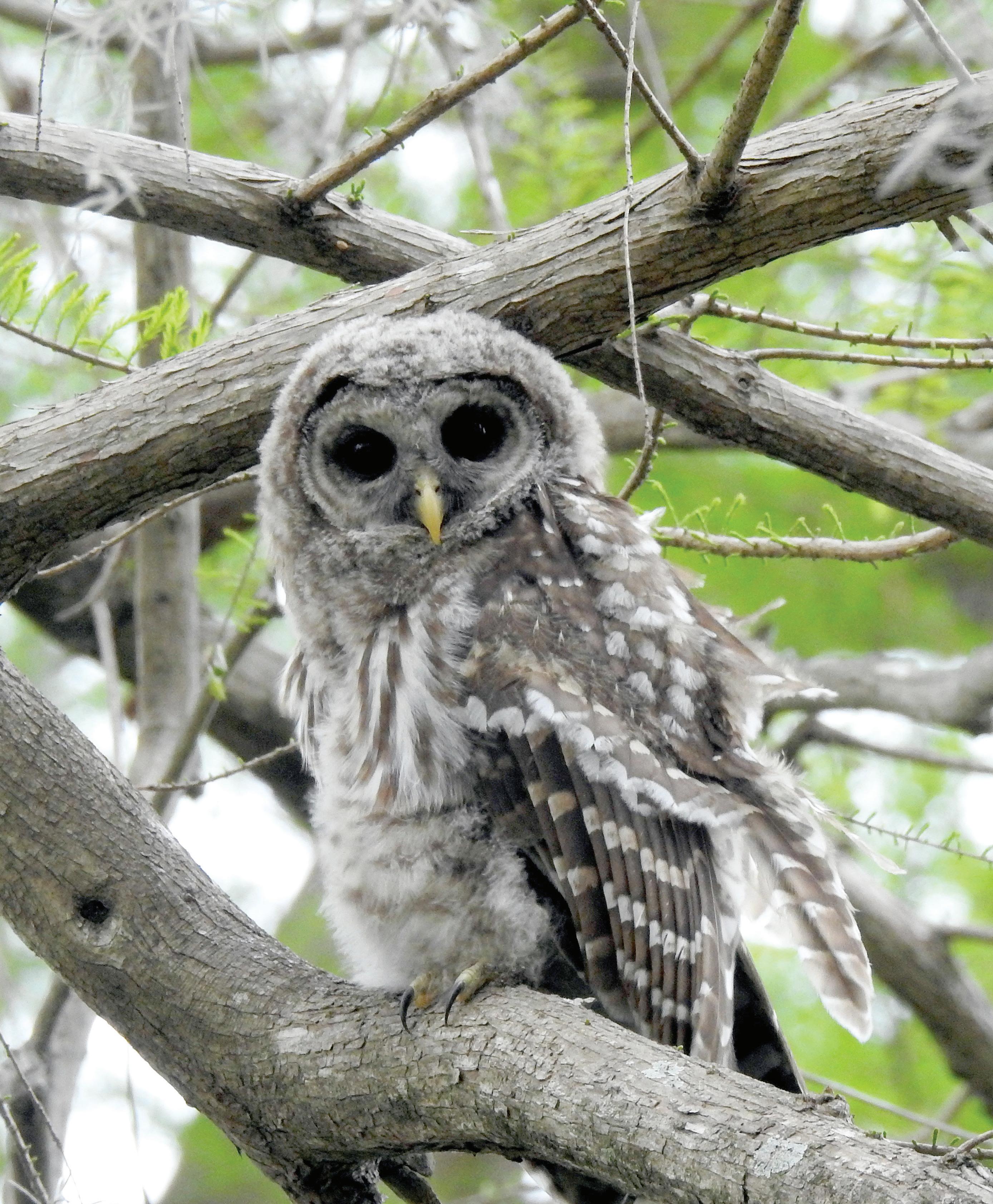

Letter from the Editor
Growing up 1000 miles from the nearest ocean, I was unaware of what we now call the Blue Economy, except for the occasional meal of fish. Since adopting North Carolina as my home, I’m surrounded by water and the things that come from it. Our series on the Blue Economy gave me an opportunity to think more carefully about the extent to which I depend on products and services that wouldn’t be available without our important coastal resources.
This issue introduces some local and national faith-based efforts to weave sustainable principles into one’s life. When I ask local churches whether they have a green committee or sustainability group of some sort, I’m often told that they don’t. But then they point out their community garden, the rain barrels they use to gather water as the first source to use for watering the grounds, or the reusable carryall bags they give out. So evidently I’m not asking the right question!
In this issue, we highlight the sustainability efforts and outreach of Southport’s Trinity United Methodist Church, as well as those of Green The Church and Interfaith Power & Light. If you belong to a faith-based group that is exploring green principles—whether you call it Creation Care or just the committee to assess the best choice of replacement windows for your historic building—I’m interested in hearing what you’re doing.
Thank you to all our advertisers, whose support has enabled us to continue bringing you local green news for more than fifteen years. Please consider doing business with them, and tell them you appreciate their support of Going Green.
Our thoughts are with the citizens of Ukraine.
— Valerie L. Robertson Editor
Contents
3
4
6
8
10
11
12
13
14
15
16
19
22
24
25 2023 Festivals
27
28 Crossword
32 Kids Korner—Barred Owls
Where to Find Cape Fear’s Going Green
You can read our issues online or pick up a print copy in the community. See the box on page 20 for more information and to learn how to subscribe.
Cape Fear’s Going Green is a quarterly publication promoting eco-friendly resources and lifestyles in the Lower Cape Fear River Basin.
Publisher & Editor in Chief: Valerie Robertson
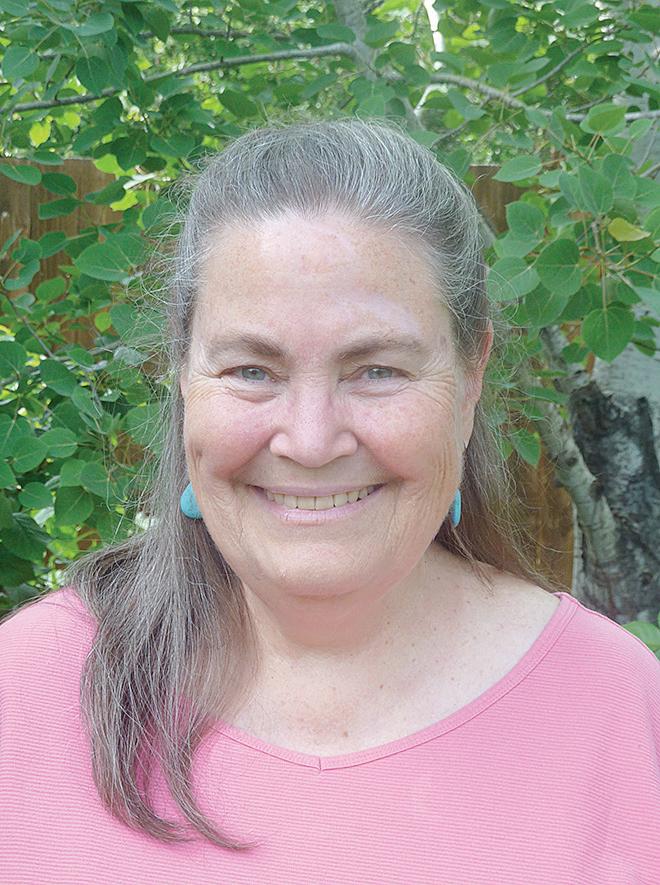
Contributing Editor: Shelby Diehl
Eugene Contributing Editor: Mary Robertson
Interns: Beth Ackerly, Morgan Greene and Rachel O’Connor
Advisors & Editorial Contributors: Jesse Bradley, Jennifer Butler, Cape Fear Museum, Mark Evens, Cindy Garb, Henry Klein, Dick Hayes, Jennifer MacKenzie, Sally Smits Matsen, North Carolina Coastal Federation, Shannon Bradburn Pragosa, Zeb Starnes and Philip S. Wenz
2010 YWCA Women of Achievement Award for the Environment
Sister City: Eugene, Oregon (Voted “Greenest City” 2006 by The Green Guide)
Cape Fear’s Going Green Going Green Publications
P. O. Box 3164 • Wilmington, NC 28406 (910) 547-4390
publisher@goinggreenpublications.com
www.goinggreenpublications.com
Editorial: If you have story ideas or calendar items to suggest, email us at editor@goinggreenpublications.com, or call (910) 547-4390.
Advertising information: Email ads@goinggreenpublications.com.
Front Cover:
A juvenile Barred Owl (Strix varia) perches on a bald cypress branch in a local park. The youngster is able to fly, at least short distances, but has come out at dusk and is waiting for a parent to bring it something to eat. It still has some of its soft downy feathers on its lower belly. See our Kids Korner page to learn more about Barred Owls.
Cape Fear’s Going Green is distributed free throughout Brunswick, Columbus, New Hanover, Onslow and Pender counties. A partial map of locations appears at https://arcg.is/1WWi0y. If you have a business and would like to receive multiple copies for the public, please contact us.
The views and opinions expressed in articles in this magazine are those of the authors and do not necessarily reflect the official position of this publication.
Coastal Carolina’s Blue Economy
World War II History and The Blue Economy
Building a Better Coast with Living Shorelines
Lionfish: Sea Monsters of the Carolinas
Being Good Stewards: Local Church Goes Green
Green The Church: A Leader in Faith-Based Environmental Justice
Celebrate Faith Climate Week with Interfaith Power & Light
Environmentalism Brings Together People of All Faiths
Shew’s Natural Treasures to Debut April 30
Your Ecological House™ —Living (Better) without Fossil Gas
Stormwater 101—Did You Drop Something?
Local Nonprofit Relocates Headquarters to MARBIONIC
21 Scotts Hill May Soon Lose a Valuable Ecosystem and Miles of Nature Trails
Gardening News
Burnt Mill Birding
Environmental Book Club Selections for 2023
2 www.goinggreenpublications.com Cape Fear’s Going Green • Spring 2023
photo by Mary Robertson Going Green Publisher Valerie Robertson is reveling in the spring temperatures.
blue economy
Coastal Carolina’s Blue Economy
by Rachel O’Connor
We don’t often pause to appreciate how much we depend on the blue economy in so many aspects of our daily life. We count on ocean-based businesses for everything from food production to power generation to tourism and recreation. We depend on the ocean and its tributaries for the basics of food, drinking water and even oxygen. Increasing numbers of us want to live near the water, build our houses on the coast, dine with a waterfront view and enjoy the proverbial long walks on the beach.
Whether it be the blue crabs on your dinner table or a kayaking trip on the Intracoastal Waterway or even buying tropical fish from your local pet store, the blue economy is inextricably woven into our culture and way of life. With such a presence, it’s not difficult to imagine that North Carolina’s blue economy is currently estimated at over $2 billion dollars, although the estimations differ based on the definition of it. A relatively broad version— one we will use here—defines the blue economy as the coastal resources one uses and considers how consumption affects the coasts around us. The way we view using resources is starting to evolve from the more extractive mindset of earlier years, and increasingly we are prioritizing sustainability.
In the articles that follow, we will write about just three of the many aspects of the blue economy: historical shipbuilding, and modern-day efforts to protect our shoreline and curtail the proliferation of invasive species that challenge the balance of our ecosystem.
History
Whether or not we used the term “blue economy,” our history of using coastal resources is a long one. For instance, North Carolinians used to cut down trees in local ecosystems like the Green Swamp in Supply, North Carolina and use these materials to build ships. The ships went on to fish, fight our wars and act as vertebrae in the backbone of our economy. Meanwhile, military forts like Fort Fisher were built to protect parts of our coast while lighthouses guided sailors to a safe homecoming. World War II left wooden ships for military use behind, leading to the retired U.S.S. North Carolina battleship docked permanently within sight of the Wilmington riverfront, where it has become a major tourist attraction.
Today, tourism is a major industry in the Cape Fear area, and one component of this is the ability to tour historic areas such as Fort Fisher and learn about its role in the CIvil War. The area around Fort Fisher, based out of Camp Davis, was one of the only locations where female air pilots could start their careers during World War II. Because Fort Fisher is such a key location for important historic and commemorative events, preserving the integrity of its shoreline is important for local tourism economy.
Protecting Shorelines
Coasts change drastically in short periods of time, both naturally and as a result of human intervention. Take Fort Fisher for example, which used to be the mouth of the Wilmington
What is “the Blue Economy?”
The Blue Economy comprises the businesses, technologies and activities that depend on the use of coastal resources for economic growth.
Increasingly, attention is being paid to the importance of sustainability in the Blue Economy, including environmental sustainability and environmental justice to build resilient communities.
Port. Since then, the entrance has shifted greatly—thirty miles upriver—as we have dredged the Cape Fear River to allow larger ships to travel closer to Wilmington proper. There were unintended consequences of dredging—the resulting saltwater intrusion killed cypress trees and helped squelch the rice-growing enterprises along the river. Unintended consequences of our efforts are something to mindful of, including efforts to stave off beach erosion.
Anyone who has built a home within sight of the beach is understandably concerned about erosion that narrows the beach or even undermines the house. Management companies spend millions to billions of dollars to maintain our coasts through beach renourishment and hard structures like jetties and seawalls only to have varying degrees of success. Placing sandbags and measuring where marsh plants grow to decide where homes can be built are all meant to stall the inevitable change in our coasts. We hope to prevent houses falling into the ocean, as has been an issue in the Outer Banks.
We humans are starting to embrace the idea of more natural ways to protect our coast from erosion and storm damage. Oyster reefs, a type of “soft structure,” play that role. At the same time, they clean our water and provide habitats to shrimp, crabs and fish, setting the stage for commercial fishing and hunting. Recognizing this, we are starting to initiate projects to shape the environment to encourage development of such reefs. Oysters work with other coastal ecosystems to provide habitat while also being a blue economy commodity in their own right.
Despite our awareness of their contribution to the blue economy, oysters are in danger, often from anthropogenicallycaused problems. Massive reductions in oyster reefs having taken place in the last century. Their struggle is intertwined with humanity, from overharvesting to disease to some well-intentioned but uninformed historical policies that have put our oysters at risk.
Protecting Biodiversity
Left alone, the ecosystem maintains a balance. As we depend more and more on a global economy, shipping and receiving products across the globe, we inadvertently introduce species to areas that are not their native territory. Species hitchhike on ships, and can wind up in areas where they have no natural enemies to keep their population in check. We also delight in gathering
(continued on page 4)
3 Cape Fear’s Going Green • Spring 2023 www.goinggreenpublications.com
World War II History and the Blue Economy
by Rachel O’Connor
If you couldn’t tell by the World War II battleship visible from downtown Wilmington, southeastern North Carolina has quite the maritime history. While the U.S.S. North Carolina wasn’t built in Wilmington and rather by a sister port in New York, Wilmington was the most productive shipyard constructing Liberty vessels during wartime, making 243 ships in just five years.
Just before WWII, nearly all local shipbuilding was done at smaller shipyards that utilized North Carolina wood almost exclusively to build wooden fishing boats. Forests of pine trees, especially the longleaf pine (Pinus palustris), used to stretch from Virginia to Florida and required wildfires in order to reproduce. Longleaf pines were replaced with faster growing pines such as loblolly pine (Pinus taeda) to produce more wood for ships, but this practice was destructive to local ecosystems. Both types of pine were beneficial for creating the first boats in North Carolina—wooden fishing boats that worked in the coastal waters.
North Carolina’s pines were particularly appealing because they were sources of tar, pitch and turpentine—three naval stores that were crucial elements in

Coastal Carolina’s Blue Economy
species from elsewhere—whether plants for our garden or exotic fish for our aquariums. If not properly contained, these can escape and, if unchecked, become a threat to the biodiversity we depend on.
North Carolinians have a profound connection to the local blue economy, and its presence is felt everywhere. Local historians and researchers have been invaluable in educating the public about the blue economy, enlightening us about the importance of conserving our resources and protecting the blue economy. We are but temporary stewards, with the job of protecting our coast so our children and grandchildren might have the opportunity to love and appreciate our coasts. The
(continued from page 4)
importance of protecting our coasts will be a common theme throughout these articles regarding the blue economy. Rachel O’Connor is obtaining her M.S. in Coastal and Ocean Policy at the University of North Carolina Wilmington. Before that, she studied Marine Biology and International Studies at UNCW and participated in research in Benthic Ecology. Rachel loves everything oysters but is also interested in climate and national security. When not studying and working, Rachel gardens, explores and learns languages.
Send us your green news! Call us at (910)547-4390 or E-mail at editor@ goinggreenpublications.com.
building ships. Pitch was painted on ships to make them watertight; turpentine, an ingredient in paint, could be used to color the ship; and shipbuilders covered riggings/ropes in tar to make them more difficult to break as they held the masts in place. However, unlike pitch and turpentine, which were harvested by cutting the tree bark, workers had to dig holes in the ground and burn the trees to get tar.
A great location to find evidence of the tar-making process is the Green Swamp, a preserve in Supply, North Carolina owned by The Nature Conservancy. If you walk down its paths, you’ll see small hills with holes atop—that is where the kiln would have been located. Keep an eye out for deep V-shaped cut outs in the pine trees as well. Those are sections of the tree that were taken for naval stores.
Visiting maritime museums across the state of North Carolina is a good way to learn about our historical relationship with the ocean. An exhibit at the North Carolina Maritime Museum in Beaufort discusses how pre-WWII ships built near Wilmington were mostly wooden fishing boats. It also describes how recreational angling became popular between the World Wars and thus started a growing industry that now contributes around $2 billion annually
(continued on page 5)
All Blue Initiative
The Alliance for the Blue Economy (“All Blue”) is a local, multidisciplinary initiative to establish Wilmington and southeastern North Carolina as a national and global leader in the Blue Economy. It is an initiative of UNCW’s Center for Innovation and Entrepreneurship (CIE).
“The task is simple—design a functional product that promotes economic growth in the “Blue Economy.” Government institutions like the World Bank use this [Blue Economy] name in reference to the usage of oceans and coastlines to promote economic growth while prioritizing sustainability and symbiosis with the ocean environment.”
—Heather McWhorter, UNCW CIE Learn more about at allbluenc.org.
blue economy
Photo by Rachel O’Connor Roger Shew places his hand inside a scarred longleaf pine tree to show UNCW graduate students the extent of the vertical cut that had been used decades earlier to extract naval stores. The scarring makes it appear as if the pine is two separate trees.
4 www.goinggreenpublications.com Cape Fear’s Going Green • Spring 2023
blue economy
World War II History (continued from page 4)
to North Carolina’s economy, according to reports issued by the U.S. Fish and Wildlife Service and the American Sportfishing Association.
When World War II started, shipbuilders from Newport News, Virginia were sent to Wilmington to help kickstart the industry. The location was chosen for its ability to bring in a large labor resource, and brought thousands more people to create the battleships needed to fight in both the European and Pacific Theaters. As a result, the city faced widespread housing and food shortages.

North Carolina’s involvement in World War II eventually boosted the blue economy in Wilmington, known at the time as “Defense Capital of the State.” The maritime museum in Beaufort lists WWII as an important driver for technology that has come to make commercial fisheries more economically profitable, such as the use of radios, sonar and refrigeration. The use of Wilmington as a shipbuilding location also helped launch the infrastructure needed to make it a major port. The New Hanover County Public Library and the Cape Fear Museum have digital collections of pictures from this period, including the vessels being christened, visits from a British ambassador, and the launching of the SS Zebulon B. Vance—the first ship built by the North Carolina Shipbuilding Company.
Ultimately, North Carolina was incredibly important in winning World War II, which led to its designation as the first “World War II Heritage City” in 2020. While the need for warships is at a low today,
Maritime Museums of North Carolina
NC Maritime Museum Southport
204 E Moore St, Southport, NC 28461
(910) 477-5151
NC Maritime Museum Beaufort
315 Front St, Beaufort, NC 28516
(252) 504-7740
Graveyard of the Atlantic Museum
59200 Museum Dr, Hatteras, NC 27943 (252) 986-0720
shipbuilding continues to be a vital part of our blue economy. From fishing boats built with North Carolina pines to historic warships that now attract tourism, the blue economy continues to play a significant role in our lives.
Sources:
National Wildlife Federation. “Longleaf Pine.” Wildlife Guide. Accessed on February 17, 2023 at www.nwf.org/EducationalResources/Wildlife-Guide/Plants-and-Fungi/ Longleaf-Pine.
The Nature Conservancy. “Green Swamp Preserve.” Accessed at February 17, 2023 at www.nature.org/en-us/get-involved/howto-help/places-we-protect/green-swamppreserve/?tab_q=tab_container-tab_element.
Still, W.N. 2000. “Wooden Ship Construction in North Carolina in World War II.” The North Carolina Historical Review 77(1): 34-53. Accessed at https://www.jstor.org/stable/ pdf/23522372.pdf?refreqid=excelsior%3
A1d8cb07d694255062cffe0ce79f23c1c& ab_segments=&origin=&acceptTC=1. www.nwf.org/Educational-Resources/ Wildlife-Guide/Plants-and-Fungi/ Longleaf-Pine
www.nature.org/en-us/get-involved/howto-help/places-we-protect/green-swamppreserve/?tab_q=tab_container-tab_element www.jstor.org/stable/pdf/23522372. pdf?refreqid=excelsior%3A1d8cb 07d694255062cffe0ce79f23c1c& ab_segments=&origin=&acceptTC=1
Rachel O’Connor is obtaining her M.S. in Coastal and Ocean Policy at the University of North Carolina Wilmington. Before that, she studied Marine Biology and International Studies at UNCW and participated in research in Benthic Ecology. Rachel loves everything oysters but is also interested in climate and national security. When not studying and working, Rachel gardens, explores and learns languages.
Photo courtesy of Cape Fear Museum | photographer unknown
The U.S.S. New Hanover, built by the North Carolina Shipbuilding Company, launched into the Cape Fear River on October 31, 1944. Here we see a view of the bow as it slips off the ways and into the water. The workmen on the ways and scaffolding show the enormous height of the scaffolding required to build such a ship. Two women and one man are on the christening stand in left foreground.
5 Cape Fear’s Going Green • Spring 2023 www.goinggreenpublications.com
Building a Better Coast with Living Shorelines
by Rachel O’Connor
As society looks toward natural solutions to protect our coasts, blue infrastructure is becoming more and more attractive due to its sustainable traits. Management companies are looking toward an upand-coming, forward-thinking method of erosion control as their new go-to solution: living shorelines.
Living shorelines stand out from other kinds of erosion control since they’re known as “soft structures”—using natural elements such as marsh plants and oyster shells in their construction. Hard structures like revetments and seawalls can cause waves to curl downward and carry sediment off the land and out to sea; this can increase erosion and undermine the hard structures. By contrast, living shorelines slow down wave energy and allow plants and the pores in reefs to capture sediment.
Living shorelines can include harder surfaces such as oyster reefs and local plants. In North Carolina, a common plant for our living shorelines is Sporobolus alterniflorus, commonly known as saltmarsh cordgrass or smooth cordgrass. The water slows when traveling over the rocks and reefs, then slows more when passing through the plants. At this pace, water drops sediments like sand and mud within the plants and the reef, allowing the land to build up behind the reef. The plant roots keep the soil in place and prevent strong waves from having a devastating impact on the shoreline.
Another benefit of living shorelines is that they create habitats for local species. Blue crabs (Callinectes sapidus), an economically important species for North Carolina, live off the structure’s resources and use adjacent seagrass beds to lay their eggs. Many fish species also spend their juvenile period in these ecosystems before heading to sea, making living shorelines incredibly beneficial in areas with commercial and recreational fishing.
Let’s look at a couple of local projects in the region making strides in living shoreline development.
What is a living shoreline?
A protected and stabilized shoreline that is made of natural materials such as plants, sand, or rock.
Living shorelines use plants or other natural elements—sometimes in combination with harder shoreline structures—to stabilize estuarine coasts, bays and tributaries.
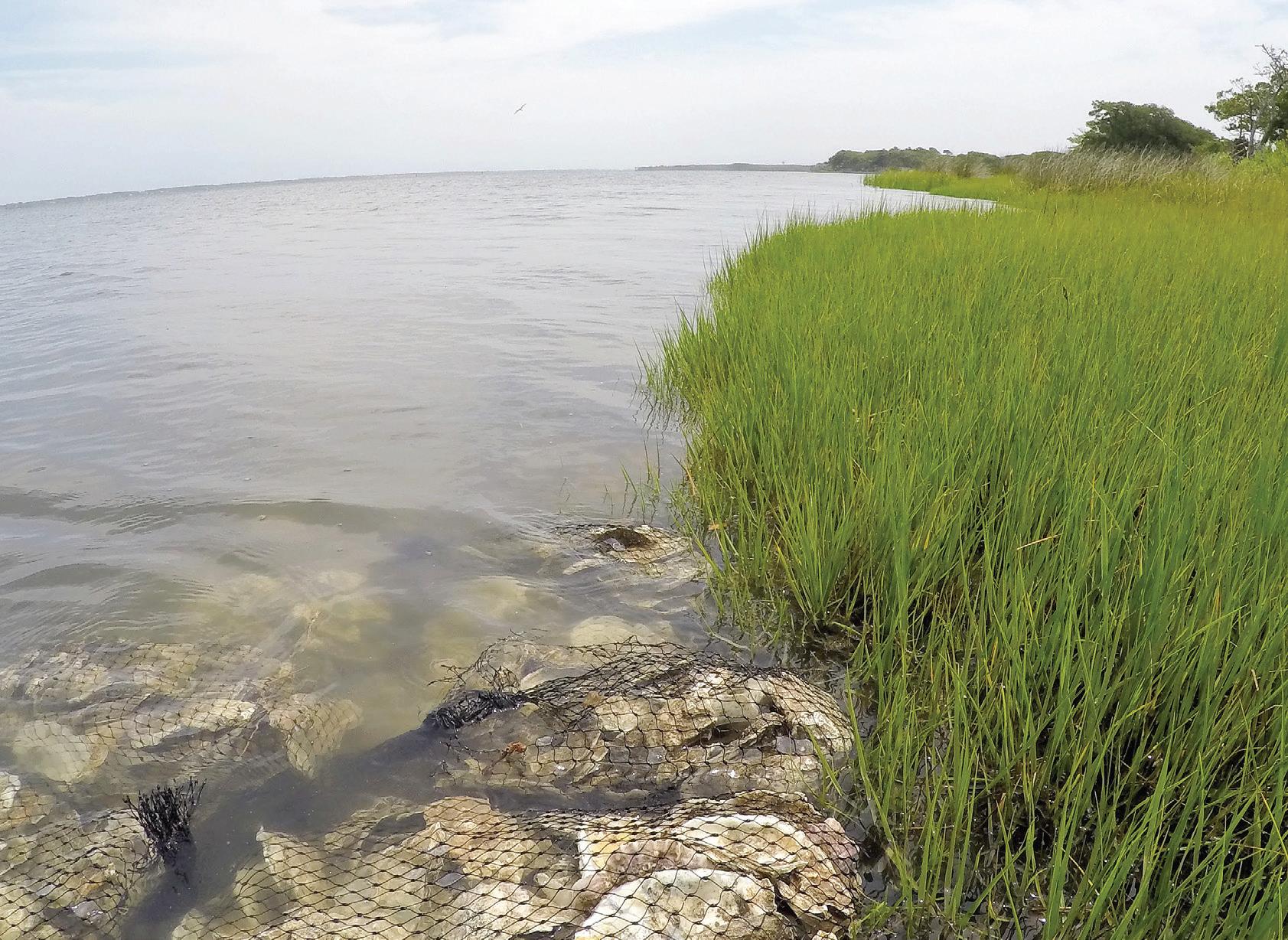
—National Oceanic and Atmospheric Administration
Started in 2004, the St. James project in Brunswick County works with the University of North Carolina Wilmington (UNCW) to monitor the research sanctuary while serving as a citizen science opportunity. Local residents, including high school students and the local Boys and Girls Club, have the chance to attend talks hosted by leaders of the St. James community and UNCW researchers. Community members can contribute by bagging recycled oyster shells, planting marsh grasses and cleaning up the local waterways. Interested in helping? Contact J. Taylor Ryan, President of the St. James Conservancy, The Royal Order of the Honorary St. James Oyster, at
jtaylorryan@msn.com or by calling (201) 924-5199.
Finished in 2019, the Sunset Beach living shoreline project is 250 feet long and includes oyster reefs, a vertical sill and native plants. The project was a recipient of the $35,000 Duke Energy Water Resources Fund to help with the threat of erosion on Sunset Beach. Interested in volunteering at living shoreline sites like this one? Reach out to the North Carolina Coastal Federation—one of the project’s partners—at www.nccoast.org/get-involved/ to see how you can help.
(continued on page 7)
blue economy
Photo courtesy of North Carolina Coastal Federation Oyster bags and smooth cordgrass growing on the living shoreline at the Trinity Center at Pine Knoll Shores. Researchers use bagged oysters to monitor oyster reef health. They can lift the bags out of the water and transport them to the lab to study.
6 www.goinggreenpublications.com Cape Fear’s Going Green • Spring 2023
blue economy
Living Shorelines (continued from page 6)
There are plenty of opportunities to visit some of the living shorelines in the area whether by foot, kayak or paddleboard. However, if you are going to visit them, keep a healthy distance from the oyster reefs to avoid running into them and breaking parts off. If you want to walk the mudflats or sandy areas—which is best done at low tide—make sure you wear close-toed shoes as sharp oyster shells could be present.
If you are going to visit a living shoreline, be prepared for the smell. Living shorelines and local wetlands are amazing carbon sinks, but that lack of oxygen causes frequent sulfur build-ups. (For those who haven’t smelled sulfur before, it smells like rotten eggs.) The carbon storage that living shorelines and neighboring wetlands provide plays an important role in combating erosion while balancing the community’s output of greenhouse gasses. Despite their benefits, wetlands are at risk. While development cannot always be prevented, supporting locations where living shorelines can be built can help protect wetlands to an extent.

For families or individuals wanting to learn more about living shorelines, the North Carolina aquariums are a great interactive resource, especially when you aren’t able to access one easily elsewhere. For residents of southeastern North Carolina, the North Carolina Aquarium at Fort Fisher is a convenient option located south of Kure Beach. However, if you’re up for a drive, the North Carolina Aquarium at Pine Knolls is a fantastic option given its oyster reefs on display outside.
Once you’ve seen living shorelines in action and learned how they protect our shore, you may be inspired to support them. You can do so by talking with friends and neighbors about the benefits, volunteering to bag oyster shells, planting cordgrass or participating in a waterway clean-up. No matter how you choose to support living shorelines, know that your doing so helps protect the environment for future generations.
Sources:
Davis, J.L., Currin, C.A., O’Brien, C., Raffenburg, C., and A. Davis. 2015. “Living Shorelines: Coastal Resilience with a Blue Carbon Benefit.” PLOS ONE. Accessed by journals. plos.org/plosone/article?id=10.1371/journal. pone.0142595
Nahlik, A.M., and M.S. Fennessy. 2016. “Carbon Storage in US Wetlands.” Nature Communications (7). Accessed by: nature. com/articles/ncomms13835
Young, S.S., Rao, S., and K. Dorey. 2021. “Monitoring the Erosion and Accretion of a Human-built Living Shoreline with Drone Technology.” Environmental Challenges. Accessed by sciencedirect.com/science/ article/pii/S2667010021003577

fisheries.noaa.gov/insight/ understanding-living-shorelines
nps.gov/articles/seawalls-bulkheads-andrevetments.htm#:~:text=Although%20 they%20hold%20soils%20in,upland%20 growth%20of%20new%20beach. sciencedaily.com/releases/2013/09/130912155800.htm fisheries.noaa.gov/national/ habitat-conservation/oyster-reef-habitat townofstjamesnc.org/index.
asp?SEC=60D51CD5-D2E5-4CD2-A9A6FB5C570780A6#:~:text=epitomizes%20 this%20goal!-,The%20St.,James. sunsetbeachnc.gov/index.asp?SEC=FEAF4E533086-46A9-97D9-F4FE95768A40&Type=B_ BASIC lifeinbrunswickcounty.com/a-living-shoreline/ wect.com/2019/01/15/living-shoreline-projectworking-project-our-shoreline/ oceanservice.noaa.gov/ecosystems/ coastal-blue-carbon/
Rachel O’Connor is an intern with Cape Fear’s Going Green. Rachel loves everything oysters but is also interested in climate and national security. When not studying and working, Rachel gardens, explores and learns languages.
Photo courtesy of North Carolina Coastal Federation Close-up of smooth cordgrass being planted on a saltmarsh on Permuda Island.
Photo by Mark Evens
Photo taken during the installation of oyster dome sills for the living shoreline at Sunset Beach in 2019. Living shorelines projects are used in many coastal towns for erosion control.
7 Cape
Going
• Spring 2023 www.goinggreenpublications.com
Fear’s
Green
blue economy
Lionfish: Sea Monsters of the Carolinas
by Rachel O’Connor
Invasive species are a critical issue to address for the waters of southeastern North Carolina. With fragile ecosystems around every bend, the invasion of nonnative species threatens to degrade habitats and eliminate local populations and communities. While management efforts are underway, it’s hard to prevent every species from causing damage, with one of those being the beautiful but venomous lionfish (Pterois sp.).
Lionfish have been slowly invading the Atlantic from the tropical Indian and Pacific Oceans. However, they didn’t just swim their way to the Atlantic. It’s believed that a 25-year record of pet lionfish abandonment has led to the current issue of invasive lionfish. While lionfish seem like a great addition to an aquarium, many end up dumped offshore because they are aggressive toward other fish, they grow larger than aquarists can handle, or for other reasons.
Kristin Holloman-Noe, Outreach Coordinator at the North Carolina Aquarium at Fort Fisher, explained, “It’s important when making an animal a pet to understand the life expectancy, the developmental stages and timeline, and the biological needs of the animal.”
After abandonment, lionfish move into shipwrecks, like some of the World War II “Battle of the Atlantic” and Civil War wrecks where they have few—if any— predators in those communities.
“Shipwrecks and reefs are known to draw a great diversity of species, but with none of those capable of defending against the Lionfish, those ecosystems are collapsing,” said HollomanNoe. Divers have even reported that shipwrecks are now covered with lionfish.
Without their native ecological checks and balances in these habitats, lionfish prey on the native grouper and snapper species1, and commercially important bass and crustaceans.
Research has found that even a single lionfish can reduce the recruitment of native fishes by 79%. In fact, a lone lionfish can eat up to 5,000 native animals in a single year. 2

In an interview with diver Cindy Garb, owner of Instigator Fishing and Diving Charters, she discussed experiences of diving and seeing lionfish “the size of basketballs” off the North Carolina coast. Garb mentioned that after they mature, lionfish can produce tens of thousands of eggs every three to four days; lionfish mature after one year and can live to thirty years old.
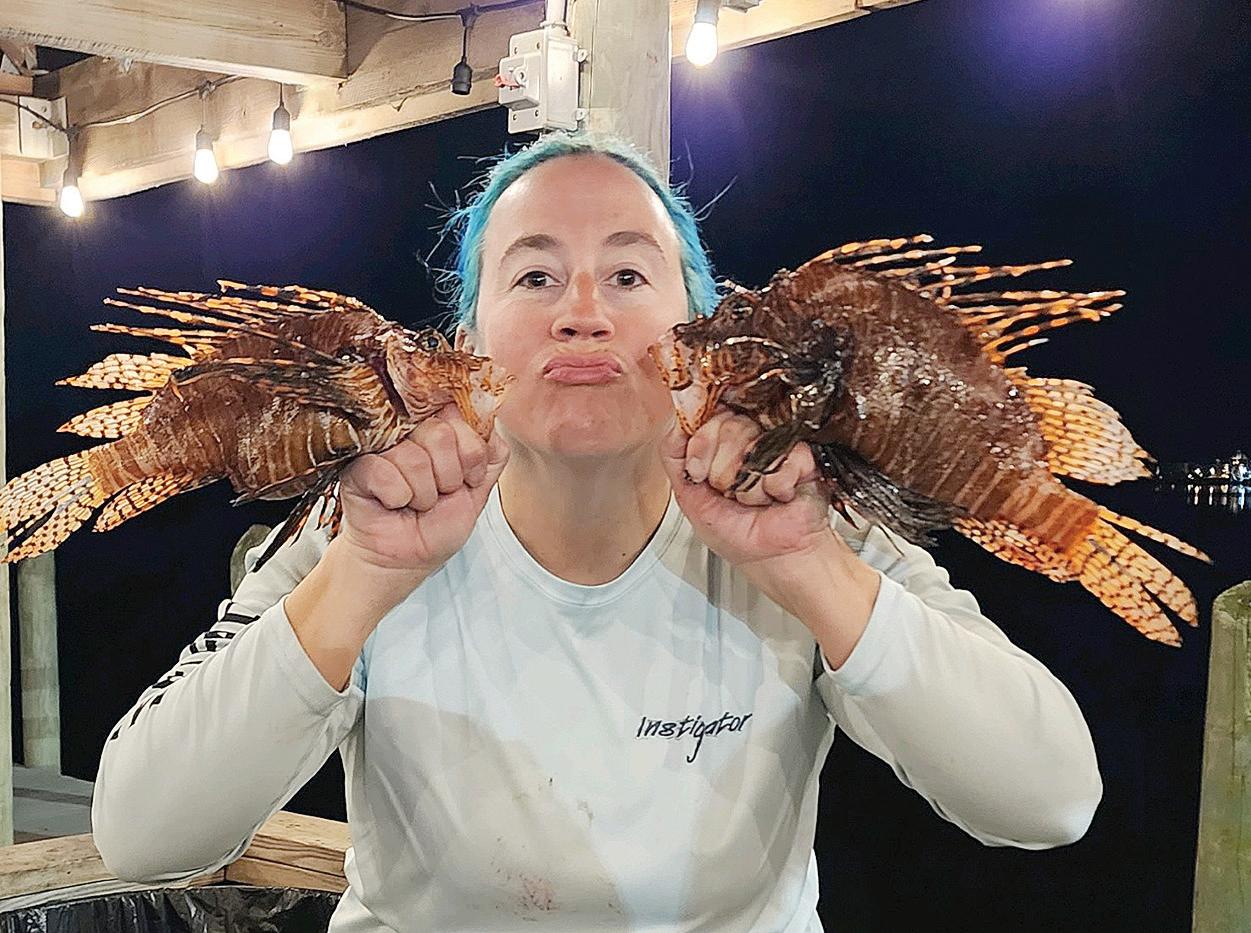
Cindy Garb is incredibly passionate about lionfish management and the fact that lionfish are a huge threat on the ledges and shipwrecks that are usually teeming with life. She exphasized the importance of hunting both large lionfish and small, as small lionfish can still eat the young fry of declining grouper species in the area. Garb also supports co-ops in her shop that have taken measures to control lionfish, as pretty much all parts
(continued on page 9)
Photo courtesy of Cindy Garb Dive shop owner and spearfisher Cindy Garb shows lionfish that she caught and will sell to community members or local restaurants. Every part of the lionfish is used, and what cannot be used, Garb feeds to her chickens.
Photo © [Sergey Skleznev] credit to Adobe Stock 22364410
A single lionfish can produce 50,000 eggs in only three days, and each lionfish can grow to the size of a basketball. They can live for thirty years and are able to reproduce for twenty-nine of those years. Lionfish such as this Pterois mombasae are unfortunately available in the pet trade.
8 www.goinggreenpublications.com Cape Fear’s Going Green • Spring 2023
blue economy
Invasive Lionfish (continued from page 8)
of the lionfish can be used for filets, jewelry, shoes, wallets and purses. She sells frozen lionfish filets in her dive shop and works with local restaurants and food trucks, selling them lionfish meat for their customers. Both Garb and Holloman-Noe report having enjoyed delicious lionfish ceviche and tacos.
Red lionfish (Pterois volitans) are particularly attractive because of their higher percentage of healthy fatty acids than their local counterparts, which demonstrates a nutritious value for local foodies. Fish connoisseurs have also found lionfish to have a mild flavor, fantastic for a variety of culinary needs. Lionfish filets are similar in size to snapper. 3 Entire cookbooks are dedicated to lionfish recipes, with Garb’s favorite recipe being lionfish ceviche.
A horrifying experience of invasive lionfish involved seeing a member of the typically tropical species on a North Carolina wreck in December 2021. Garb had returned to a site to locate a GoPro camera that had been used recently and saw a small lionfish swimming through the water. She swatted it into a large bag, careful to not get stuck by any of the venomous quills, and surfaced. She had been seeing lionfish since she started diving in 2005, but December 2021 was the first time she saw one in a wreck in the winter, indicating the potential for future colonization of the wrecks year round.
Lionfish and invasive species in general have created greater revenue potential for sectors of the blue economy such as recreational fishing. If you’re interested in hunting lionfish, dive shops are great locations to ask where lionfish are currently living. According to Garb, “where you find lobster, you find lionfish.” With invasive species being near-impossible to eliminate once they are established in the local ecosystems, hunting them is a great solution to helping control the population size.1 Spearfishers like Garb are very passionate about conservation and ecosystem management, and she explained the importance of training in spearfishing before attempting it in order to know which species to hunt and which are important to conserve.
Garb also described some of the dangers in hunting lionfish. She warns divers hunting lionfish that “if you are allergic to bee stings, you are probably allergic to lionfish venom” and cautions them to keep Epi-Pens on hand in case of emergency.

Recreational fishing and the restaurant industry are crucial to lowering lionfish numbers across the eastern seaboard. As management officials continue to work with local stakeholders to address the lionfish problem offshore, the development of a local commercial lionfish market is encouraged. Spearfishers like Cindy Garb can be a critical line of defense to a fight against rapidly reproducing invasives like the lionfish. Making sure invasive species management is prioritized could be the next fight for a sustainable future.
Notes:
1. nas.er.usgs.gov/queries/FactSheet.aspx?speciesID=963
2. www.scseagrant.org/red-lionfish-super-invader-for-supper/
3. www.wunc.org/environment/2022-08-25/ hands-deck-researchers-divers-testing-quell-lionfish-invasion-cree
Sources:
Albins, M.A., and M.A. Hixon. 2008. “Invasive Indo-Pacific Lionfish Pterois volitans Reduce Recruitment of Atlantic Coral Reef Fishes.” Mar Ecol Prog Ser 367: 233-238. Accessed by: www.vetofish.com/sites/vetofish. com/files/actu/attachment/invasive_indo-pacific_lionfish_pterois_ volitans_reduce_recruitment_of_atlantic_coral-reef_fishes.pdf
Morris, J.A., A. Thomas, A.L. Rhyne, N. Breen, L. Akins, and B. Nash. 2011. “Nutritional Properties of the Invasive Lionfish: A Delicious and Nutritious Approach for Controlling the Invasion.” Aquaculture, Aquariums, Conservation & Legislation 5: 99-102. Accessed by: docs. rwu.edu/cgi/viewcontent.cgi?article=1142&context=fcas_fp
Munoz, R.C., Currin, C.A., and P.E. Whitfield. 2011. “Diet of Invasive Lionfish on Hard Bottom Reefs of the Southeast USA: Insights from Stomach Contents and Stable Isotopes.” Mar Ecol Prog Ser 432: 181-193. Accessed by: www.int-res.com/articles/meps2011/432/m432p181.pdf

www.wunc.org/environment/2022-08-25/ hands-deck-researchers-divers-testing-quell-lionfish-invasion-creep www.scseagrant.org/red-lionfish-super-invader-for-supper/ www.newsweek.com/em-clark-world-war-two-ship-sunk-lionfishmarine-life-swarm-venomous-video-1710001
lionfishcentral.org/hunting-lionfish/lionfish-hunting-north-carolina/ oceanservice.noaa.gov/facts/lionfish.html
www.npr.org/2020/08/26/906333379/ researchers-develop-a-trap-to-control-population-of-invasive-lionfish blogs.ifas.ufl.edu/news/2022/05/24/a-new-study-outlines-the-dos-anddonts-of-managing-invasive-lionfish
Rachel O’Connor is an intern with Cape Fear’s Going Green.
WE’VE MOVED! 4403 PARK AVENUE 910.408.2228 Handcrafted Jewelry, Pottery Paintings, and Fused Glass Art Classes and Summer Camps CREATIVE JEWELRY FOR CREATIVE SOULS MITZYJONKHEERJEWELRY.COM JONK
9 Cape Fear’s Going Green • Spring 2023 www.goinggreenpublications.com
H EER
Being Good Stewards: Local Church Goes Green faith-based sustainability
by Morgan Greene
If you were at the Southport Wooden Boat Show last November, you may have noticed a group of people volunteering their time to collect plastic litter. That would have been Trinity United Methodist Church’s (UMC) Creation Care Team, and cleaning up after festivals isn’t the only thing they’re doing to protect our local environment.
Trinity UMC is part of North Carolina’s Green Church Initiative, a statewide program created to help churches become more sustainable and care for their local environment. Trinity’s Creation Care coordinator, Peggy Lacey, says the program is about Biblically-ordained stewardship.

“As disciples of Christ, we are called to be good stewards of God’s creation,” says Lacey. “Accordingly, we call upon the United Methodist Church to adopt fresh ways to respond to the perils that now threaten the integrity of God’s creation and the future of God’s children.”
Trinity UMC officially joined the Green Church Initiative in 2020, and so far, they’re the only church in the Brunswick-New Hanover area recognized as an OceanFriendly Establishment by Plastic Ocean Project. Lacey says the church’s goal in adding “ocean-friendly” to their repertoire was to reduce their consumption of singleuse plastics.
“We put things in our newsletters for people about skipping the straw and bringing bags to the grocery store,” says Lacey.
The church also provides brochures to local restaurants about how to become Ocean-Friendly Establishments themselves.
“Some of the criteria could be [offering] straws or disposable to-go cutlery only upon request, providing non-plastic biodegradable food containers,” says Lacey, “and [now] we have three restaurants [in Southport] that … are pretty much sustainable.”
Trinity United Methodist Church is practically a sustainable restaurant itself, recycling any plastics and refraining from using Styrofoam during the church’s “Wonderful Wednesdays,” periodic family dinners and Bible study nights. Trinity’s Creation Care Team has passed out boxed water at these events, and they give out LED bulbs in the Southport and Boiling Spring Lakes areas as well.
The team also collects used Inkjet cartridges and batteries from the community. The inkjet cartridges are sent to California through a recycling program called Empties4Cash. While the batteries can’t be recycled, they are gathered and sent to a hazardous waste facility to keep them from otherwise contaminating the environment. Additionally, the team donates to other environmental groups like Environment North Carolina and Creation Justice Ministries.
Apart from Lacey, Trinity’s Creation Care Team currently has five other dedicated members: Ann Meccarielli, Carolyn Vey, Carol Grosbier, Faith Sexton and Cynthia Hamrick. However, the team is always on the lookout for more volunteers—and if you don’t live in Southport, there’s an opportunity for your church to go green too.
“One of the things with the Green Church is to do … gardens,” says Lacey. “That’s how people are getting into becoming a Green Church, they’ll start with a garden. We started with a kitchen.”
Rather than planting a vegetable garden, Trinity UMC became a Green Church through their sustainable kitchen practices, particularly during their Wonderful Wednesday events. While the church lot isn’t large enough for a traditional vegetable garden, they do grow native plants to support bees, butterflies and other local pollinators.
As for the future of Creation Care, the team hopes to grow their numbers and continue expanding their environmental outreach, especially in terms of engaging the youth and teaching children about sustainable practices.
Photo by Zeb Barnes
10 www.goinggreenpublications.com Cape
Spring 2023
Trinity United Methodist Church’s creation care team donated a prayer shawl, recycling information, a reusable shopping bag and 16 LED bulbs to this newly-built Habitat for Humanity house in Southport. Their donation of energy-efficient bulbs will save energy and help defray the new homeowner’s cost of energy long-term. From left, photographer Zeb Starnes, Faith Sexton, Ann Meccarielli, Peggy Lacey, homeowner Elizabeth Hewett, Carolyn Vey and Becky Felton. (continued on page 11)
Fear’s Going Green •
faith-based sustainability
Green The Church: A Leader in Faith - Based Environmental Justice
By Beth Ackerly
Communities of color are often disproportionately affected by environmental issues. For instance, African Americans are 75% more likely to live in communities nearby facilities that negatively affect air quality. Meanwhile, white families are more likely to see reinvestment in their communities after natural disasters than those of color. To help address this is Green The Church, a nonprofit organization founded in 2010 by Rev. Dr. Ambrose Carroll Sr., which provides environmental and economic resilience to Black communities.
“Green The Church engages Black churches and surrounding communities, particularly those who have felt excluded or detached from the environmental movement, to participate in sustained mobilization towards stopping climate destruction and participating in a just transition toward sustainable, more equitable and healthier ways of living and working,” says Rev. Carroll.
Rev. Carroll strongly believes in the power of Black churches to solve environmental problems and inequities in their communities. To support this effort, Green The Church collaborates with organiza-
tions such as The Nature Conservancy and the Environmental Defense Fund to educate their congregations and provide them with the resources necessary to achieve sustainability and community health.

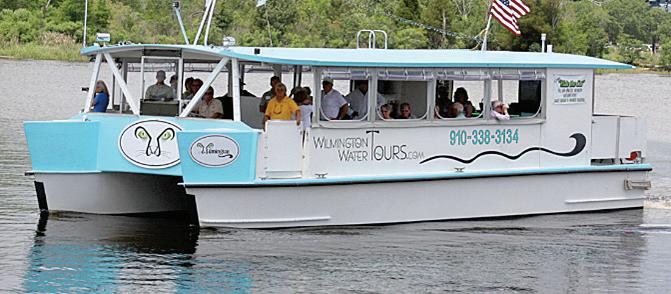
Green The Church partners with the Rev. Dr. Kenneth Davis Scholarship Fund to award a scholarship each year to a student “who desires to leave [the earth] better than how they found it.” This scholarship is for young students of color who are pursuing a STEM degree, have demonstrated financial need and are passionate about environmental justice.
Visit greenthechurch.org to learn more about the organization and/or contribute to their scholarship fund.
Sources
creationcare.org.uk greenthechurch.org greenthechurch.org/ carroll-ministries-international everydayhealth.com/black-health/one-pastors-mission-to-bring-environmentalism-tothe-black-community
Beth Ackerly is studying environmental science at UNCW and will graduate in May 2023. She enjoys hiking, writing, music and spending time with her 6-year-old daughter.
Being Good Stewards (continued from page 10)
“Through our newsletter … we always ask if anyone wants to join,” says Lacey. “I’d like to get some more young people [and] activity books about recycling. We’re going to put those out with the Sunday school class or the after-school class.”
Anyone can be a good environmental steward and make their community more sustainable, but the youngest generations are going to feel the impacts of Creation Care the most.
“It’s hard,” says Lacey, “because the whole climate issue, it’s controversial. So … you have to come in like well, this is for our grandchildren. This is for our children. Think about what we’re leaving them.”
There are many ways to become a Green Church, such as installing solar panels, replacing incandescent bulbs with
LEDs, or providing fruits and vegetables during church meals. To learn more about how your church can get involved, visit https://nccumc.org/creation/greenchurch-initiative, and come meet Trinity UMC’s Creation Care Team in person at NatureFest in Southport on April 29! NatureFest will be held Saturday, April 29, 2023 at Taylor Field Park, 409 E. Nash St. in Southport, North Carolina. It will feature environmental nonprofits and activities, and it will be free. Learn more at www.facebook. com/southportnaturefest.
Morgan Greene is a senior at UNCW majoring in biology with a concentration in terrestrial and freshwater conservation. She enjoys sharing fun facts about insects and other tiny animals on her blog, The ArthroBlogger, found at thearthroblogger.com.
Does your faith-based group have a green committee? A community garden? Rainbarrels? A campaign to use less plastic? Going Green welcomes editorial contributions from the community. If you have an environmental story you’d like to share, contact us and we’ll email you our “Contributor Guidelines.” Email Publisher@ GoingGreenPublications.com or call (910)547-4390

11 Cape Fear’s Going Green • Spring 2023 www.goinggreenpublications.com
faith-based sustainability
Celebrate Faith Climate Week with Interfaith Power & Light
By Beth Ackerly
For 25 years, Interfaith Power & Light (IPL) has been leading the charge when it comes to Creation Care. So first, what is Creation Care? The term “Creation Care” may mean something slightly different to each congregation, but in general, it’s a philosophy that encourages people of faith to see themselves as part of nature rather than being in control of it. Because of their belief that the earth was created by God, they believe that the earth has intrinsic value, and see caring for it as a sacred act of love towards their God. Believing that all creatures are God’s creation, they strive to care for animals as well.
Interfaith Power & Light, founded in 1998 in California, puts Creation Care at the forefront of their mission. They have helped pass clean energy laws in California, and teach people of faith about the dangers of climate change and how to be stewards of our environment.
IPL is involved in numerous programs, but perhaps the most prominent and most important is their Faith Climate Action Week program. For ten days each April, IPL focuses on combating climate change and achieving climate justice through an educational program that includes downloadable sermons, prayer, movie screenings and activism.
IPL encourages congregations across the nation to get involved, and each year they put together a presentation that churches and other groups can use to educate their followers about IPL’s yearly mission. For $26 plus shipping, readers and church representatives can request a kit to be mailed to them from IPL that contains information about the yearly theme and instructions for how to activate their congregation to join IPL’s movement for climate justice.
This year, IPL’s theme for Faith Climate Action Week is “Living the Golden Rule,” which focuses on transitioning to a clean energy economy. IPL believes that its followers have a duty as people of faith to transition to green energy sources and to do so in a way that addresses systemic inequalities. This year’s kit includes a booklet with information about climate justice and clean energy, as well as postcards that are part of a campaign directed at car manufacturer Toyota with the goal of encouraging Toyota to invest more in electric vehicles.
IPL has also selected a short film, Current Revolution: Nation in Transition,
to go with this year’s campaign. The film highlights the Navajo Nation’s switch to renewable energy. Screening rights for this film are normally $90, but through IPL’s partnership with the American Resilience Project, viewers are able to watch the film during Faith Climate Action Week for free. Viewers can visit faithclimateactionweek. org/films to register to screen the film to their organization or view from home, both via online streaming. DVDs of the film can also be purchased for $25 + shipping. Although church congregations are the target of IPL’s campaign, this film would be appropriate for any climate-conscious group or organization to view.
Readers can learn more about the organization at interfaithpowerandlight.org and faithclimateactionweek.org. Ideas for faith-based learning and worship services based around the theme of climate change can be found on both websites. IPL’s materials are also available in Spanish. Beth Ackerly is studying environmental science at UNCW and will graduate in May 2023. She enjoys hiking, writing, music and spending time with her 6-year-old daughter.
Oregon Earth Summit
Oregon Interfaith Power & Light (IPL) held their Tenth Annual Oregon Interfaith Earth Summit in February 2023, sponsored by Ecumenical Ministries of Oregon and Oregon Interfaith Power & Light (EMO/OIPL). The theme this year was: “Care for Our Common Home: Building Neighborhood Climate Resilience.”
The summit format was cleverly designed to include people from all across the state who could either travel to the summit, or watch the statewide portion of the event from home via Zoom or gather in one of ten HUB locations around the state to watch via Zoom with other people. Speakers presented by Zoom, and those who had gathered in a HUB to participate could then discuss the material with the other people in their HUB. If you watched in a HUB you likely were with members of
your own community—and in some cases with members of your own congregation. Many planned small meetings to continue the discussions on an ongoing basis.
There were ten simultaneous regional gatherings at HUB locations in the Oregon cities of Beavercreek, Bend, Corvallis, Dallas, Eugene, Florence, Medford, Newberg, Portland and Salem. (Our publisher attended from Wilmington via Zoom.)
Speakers presented successful projects in their home communities and two of these might be of especial interest to North Carolinians. Video of the statewide portion of the 2023 Oregon Interfaith Earth Summit is available at youtube.com/ watch?v=nch-k9Q2Gw4, for anyone to watch or share.
(continued on page 23)
12 www.goinggreenpublications.com Cape Fear’s Going Green • Spring 2023
faith-based sustainability Environmentalism Brings Together People of All Faiths
 By Beth Ackerly
By Beth Ackerly
We live in a polarized world, quick to point out our differences and reasons why we should distrust one another. But as I sat down to write articles about Creation Care, I thought about the role that environmentalism plays in the lives of people I know, even those who share very different backgrounds. From this, I concluded that the environment can be a tie that binds us, not something that divides us.
I consider myself to be agnostic, although I have a very deep earth-based spirituality that I follow in my personal life. I honor the changing seasons and the different roles they play in my life, and at the time I’m writing this, look forward to celebrating the spring equinox with my family. I compost most of my food waste, which then goes to feed my garden. I refuse to buy from corporations that are known to be big contributors to plastic waste. I believe that the environment is sacred and use that as guiding principle in


my life and in raising my young daughter, Luna.
On the other hand, my mother, Ann Snavely, has been a member of the Lutheran church her entire life. And though her beliefs are very different from mine, the central theme of protecting our planet remains firm. Growing up, Mom was always tending to her rose and gardenia bushes, and nowadays her garden is filled with beautiful native plants and flowers that thrive in her home in Florida. She refuses to purchase single-use water bottles, using a filtration system in her kitchen and reusable bottles instead. She also collects her old newspapers and gives them to the local animal shelter to shred for litter for the cats.
“God has instructed us to be good stewards of all that He has given us, and that certainly includes the earth,” she says.




Next, I turn to one of my best friends of 21 years, Nabeeha Ali. Nabeeha is Muslim, and she too considers caring for the en-
vironment as part of her faith. She enjoys participating in clean-up events and grows vegetables and herbs that she shares with friends and family.
“Taking care of the environment … helps me to feel grounded within myself and my faith. I know I’m helping to create a thriving and beautiful place for myself and my loved ones,” Nabeeha says. “Giving is a huge deal in my religion. When you give, you are practicing kindness and encouraging people to be harmonious with each other. It’s a way of spreading peace, which is what my religion is about.”
I feel blessed to know these people from very different walks of life. Our lives are made richer by being able to come together to share our varied experiences and find common ground. Achieving our mission of protecting earth is made easier and better by accepting our differences and working together toward our common goal.
Beth Ackerly is a Spring 2023 intern with Cape Fear’s Going Green.
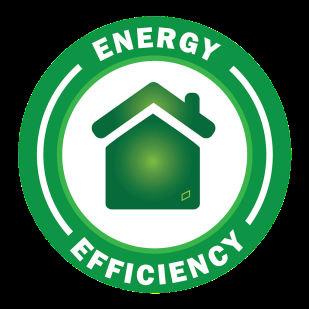
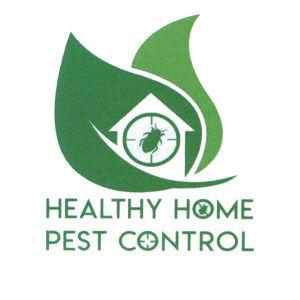
Mold, Moisture, Odors, Dirty Air, Wood Rot? We are the windows to your home’s crawl space! Healthy Home Pest Control 910-540-1030 Find out more at hhpestcontrol.com/moisture-control/ Control & create a inspection “We wouldn't trust anyone else!” Aunt Kerry's Pet Stop, Wilmington 910-540-1030 hhpestcontrol.com/moisture-control/ 13 Cape Fear’s Going Green • Spring 2023 www.goinggreenpublications.com
Shew’s Natural Treasures to Debut April 30 environmental film
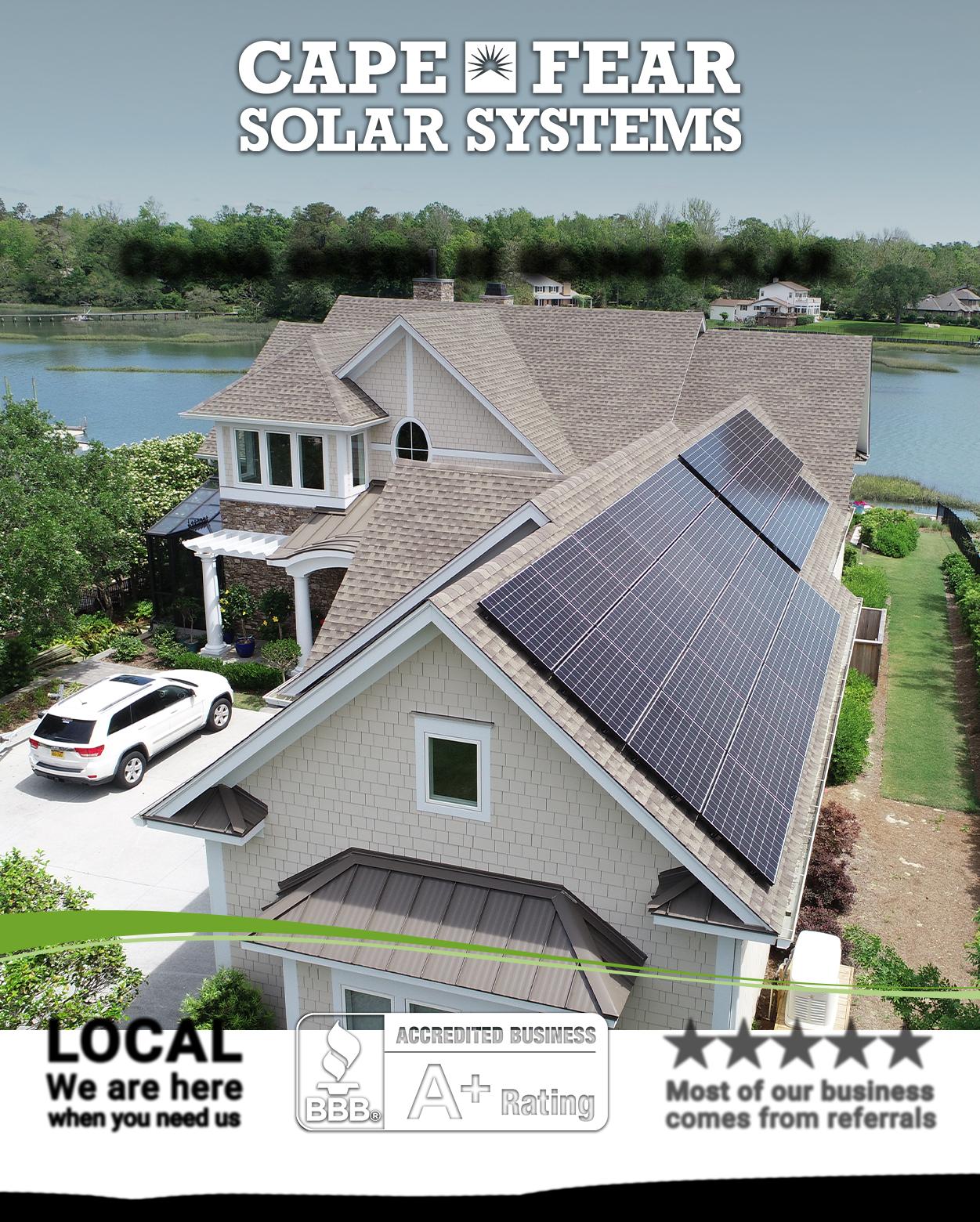
At the University of North Carolina Wilmington, Roger Shew, a native of Brunswick County, has been educating students and the community for decades about our wild spaces, their importance and the threats to our regional ecosystem. He works in the community to preserve these habitats, including his self-described “natural treasures” of the coastal plain in southeastern North Carolina. Our community is at a critical stage with development and pollution endangering our natural ecosystems, including our natural treasures and the species that call them home.

A University of North Carolina Wilmington (UNCW) documentary film will premiere on Sunday, April 30, at 4 p.m. in the UNCW Fisher Student Center’s Lumina Theater. Shew’s Natural Treasures: The Coastal Plain of Southeastern North Carolina shows nature cinematography of some what makes our natural areas so special. This showing will be free and open to the public.
pomegranate books
“A good little bookstore… is a laboratory for our coming together.”
Ross Gay

“I love walking into a bookstore. It's like all my friends are sitting on shelves, waving their pages at me.” Tahereh Mafi
ZOLA

a waterways and ocean friendly, plastic free business roasting organic, shade grown and small farm coffee lots
4418 PARK AVE 910.452.1107
The documentary focuses on educating audiences about these unique natural areas, their native plants and animals species and their awe-inspiring mystique. Viewers will take a trip through the mysterious Carolina Bays and to the region’s main drinking water source, the Cape Fear River, and the ancient forest hidden along one of its tributaries. They’ll journey to the long leaf pine savanna, home of the iconic Venus flytrap, ending at the coast’s vital salt marshes and barrier islands. The film highlights these astounding natural landscapes surrounding Wilmington, North Carolina, and explores the threats and challenges these environments face. Audiences will be inspired to preserve and protect these natural treasures now and for future generations.
View the trailer at uncw.edu/ur/naturaltreasures.
bring this ad for a free cookie with co ee bag purchase
14 www.goinggreenpublications.com Cape Fear’s Going Green • Spring 2023
Photo by Jesse Bradley Roger Shew paddles the Black River.
your ecological house™
Living (Better) without Fossil Gas
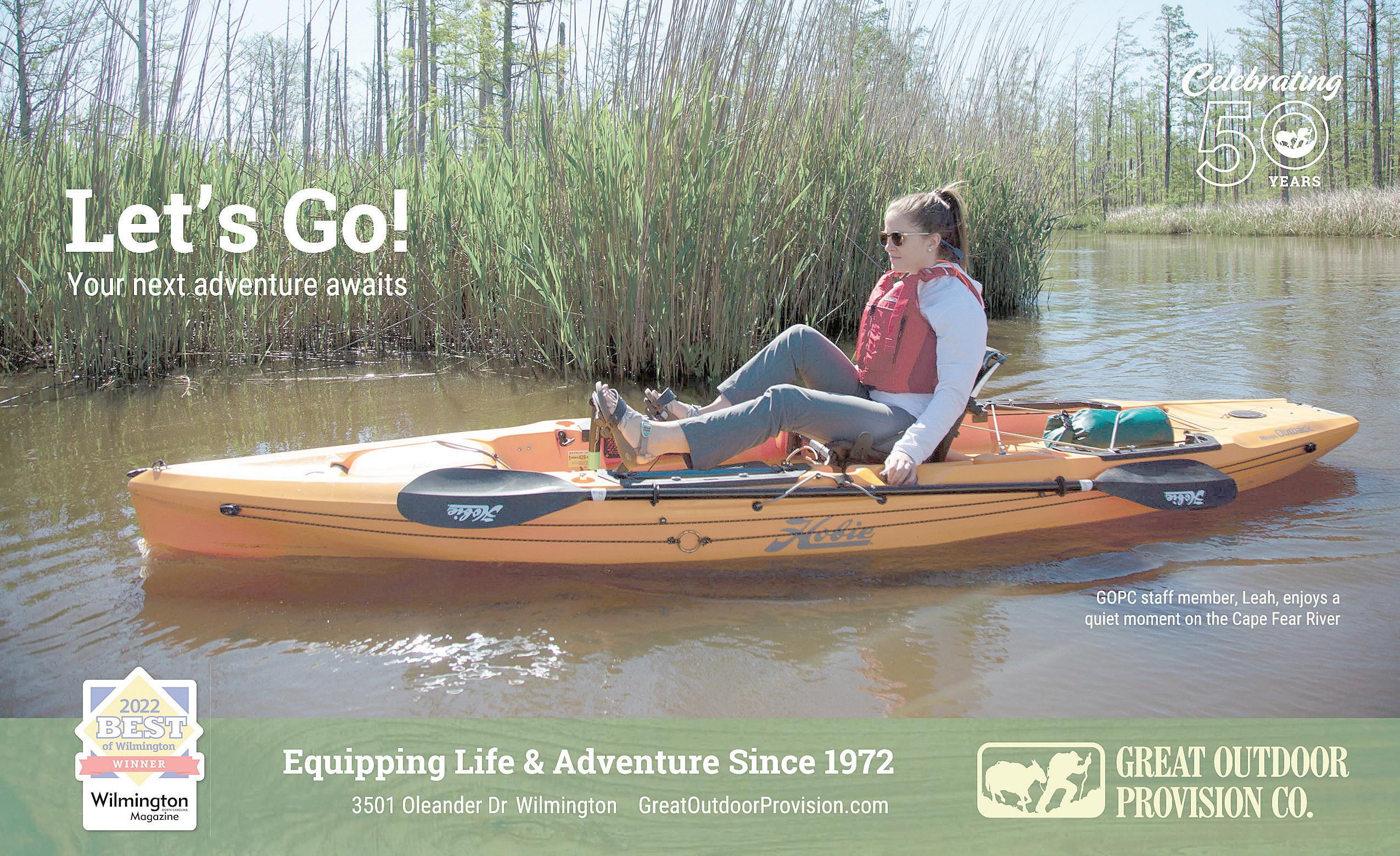
“There are plenty of things to love about induction ranges, whether you’re obsessed with perfectly prepped food or interested in energy efficiency.”
— Paul Hope, Consumer Reports
Despite the loud and persistent objections of the fossil-fuel industry, Americans are electrifying their homes.
For example, in 2022, for the first time, annual sales of new, whole-house electric heat pumps rose above four million units, outstripping sales of gas furnaces, which dropped off substantially. And that was before the Inflation Reduction Act’s considerable incentives of up to $8,000 for installing heat pumps kicked in on January 1, 2023.
Probably the main reason for the surging sales of heat pumps for new homes, or for replacing existing units, is that they are up to three times more efficient than gas furnaces. That makes them a great investment over the 15- to 25-year lifespan of typical heaters. Also, with a simple adjustment to your thermostat, most heat pumps convert to full-house air conditioning mode for the summer months. And of course, they are much better for the environment than fossil gas furnaces.
After purchasing a heat pump, the next big step most homeowners can take to move past gas is to switch to an electric stove — with a new electric induction range being the best choice. The IRA’s incentives to purchase an electric stove provide up to $840 in tax credits. (Note that although some IRA tax credits may not be available until late 2023, most will remain available for several years, so homeowners can plan to tackle their projects one at a time, as their budgets permit.)
Induction ranges are both more energy-efficient and, according to a number of home magazines and professional cooks, better for cooking than either gas or standard electric stoves. The term “induction range” can be a little confusing, because these stoves actually have the same type of efficient convection ovens found in standard electric stoves, but their cooktops are equipped with heat-free induction “burners” instead of the electric-resistance coils of conventional electric stoves.
Did you read that right? Yes.
Induction cooktops don’t get hot — their coils produce a magnetic current, inducing a magnetic flow in the cookware itself that causes it to heat up. Because heat from the stovetop doesn’t have to be transferred from a hot coil, the cookware reaches the desired temperature almost instantly. This direct, rapid heating (continued on page 16)
15 Cape Fear’s Going Green • Spring 2023 www.goinggreenpublications.com
Living (Better) (continued from page 15)
saves energy, so induction cooktops are five to 10% more efficient than standard electric models and three times more energy-efficient than gas stoves — and food cooks up to 50% faster. Also, since induction coils don’t get hot, you can accidentally touch one, or clean the stove without burning yourself if you happen to leave it on.
Many cooks like induction stoves because, unlike electric stoves, they turn off instantly, allowing for superior control. (So do gas stoves, but they take much longer to heat food, they’re harder to clean and, well, they use gas.) Also, because both the bottom and the sides of the cookware heat (magnetize) simultaneously, cook-
ing is more precise and even — no more scorched pot bottoms.
Although induction stoves have been widely available since the early 2000s, they’ve been somewhat slow to catch on because they require a bit of a learning curve to use. You’ll have to adjust to their quick heating and precise controls, though many professional chefs say once you do so, you’ll be glad you did. Also, you must use cookware made of, or at least coated with, metal with magnetic properties, namely iron and its derivatives such as stainless steel. (To find out whether your present cookware will work, see if a small magnet will stick to it.)
Cape Fear River Watch River-Themed Book Club Celebrates Seven Years
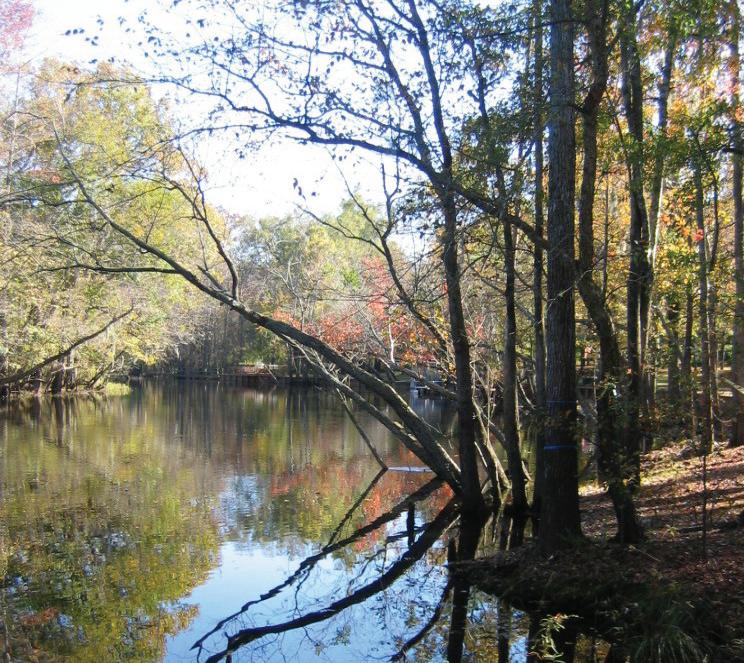
This month Cape Fear River Watch (CFRW) celebrates seven years of the CFRW Book Club. Club Founder Chantay Allen thanks all who have participated.
“Over the years, it has been a pleasure to help lead the discussions of nearly 40 books!” says Allen. “As the founder, I am delighted our river-centric environmental book club has continued to grow and would like to acknowledge founding member Tom Tewey as well as Fred Bingham for making book recommendations and volunteering their time to help lead our discussions.”
The Club’s next book selection is Animal Factory by David Kirby, about Concentrated Animal Feeding Operations (CAFOs), long a CFRW environmental concern. Copies of the book will be available to book club members for a 15% discount at Pomegranate Books.
The April/May 2023 meeting will be Saturday, May 27 at 10:30 a.m. at Pomegranate Books, 4418 Park Avenue, Wilmington. If you would like to lead the discussion, please email the bookstore at pomegranatenc@gmail.com.
Inflation Reduction Act incentives cover other electrical appliances and upgrades, but upgrading your furnace and stoves are big steps toward eliminating fossil gas consumption at your ecological house.
Philip S. Wenz is an environmental researcher and writer. Visit his blog at firebirdjournal. com.

© Philip S. Wenz, 2023
Boathouse Rentals Offer Close-Up Nature Views
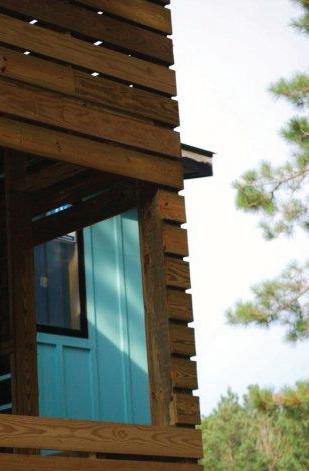
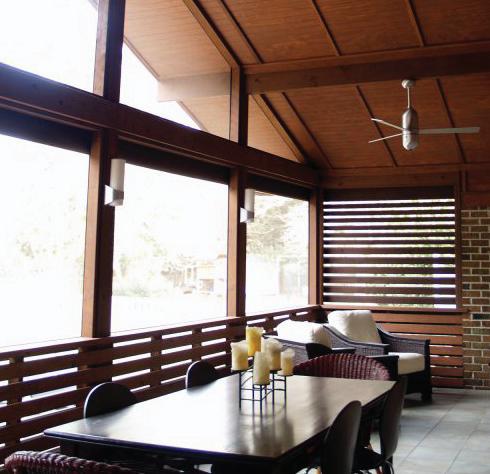
Nestled in the heart of Wilmington, Greenfield Lake is rich in history and full of wonderful views. You can see Spanish moss draped over 100-year-old cypress trees where dozens of bird species congregate seasonally and year-round.
Renting a paddle boat, kayak or canoe is a wonderful way to enjoy some time out on the water and get a close look at nature. Cape Fear River Watch manages the Greenfield Lake boathouse, under a contract with the City of Wilmington, offering hourly rentals of two- and four-person paddleboats, kayaks and canoes.
Effective Wednesday, April 12, the Greenfield Lake Boathouse is back open for its regular season hours, Wednesday–Monday from 11 a.m. to 5 p.m. It is closed on Tuesdays.
The Boathouse is located at 1739 Burnett Blvd. in Wilmington. Learn more at capefearriverwatch.org/greenfield-lake.
Sign up for the Going Green newsletter!
We’ll send you updates to let you know when a new issue is published. Let us know by email if you’d also like to be on the email list for Environmental Book Club news. Email Publisher@ GoingGreenPublications.com or sign up directly on our website: GoingGreenPublications.com. Questions about Book Club? Call (910)547-4390.
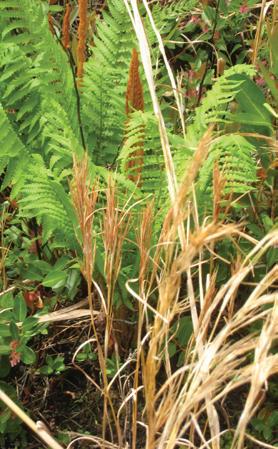
green news B+O: design studio, PLLC architecture / landscape architecture mail: 1319-CC Military Cutoff Rd., PMB 221 tel: 910.821.0084 www.b-and-o.net
16 www.goinggreenpublications.com Cape Fear’s Going Green • Spring 2023
Robertson directly in its wall will degrees, Outstanding Center garden retireand entican this you in a opportube were confident the maybe He others. comdocumentatogether office
Did You Drop Something?
Picking up after pets required by Wilmington City Code; protects waterways & public health
space. One of the tenants will be the Wilmington-based software company Untappd, creator of the popular beer app.
It’s Mott’s hope that, through the success of this green wall, they will grow in popularity in our area. And that way, more building occupants will enjoy the health and aesthetic benefits of systems like these in the near future.
by Jennifer Butler
I was once asked by a Wilmington resident why the City was educating citizens to clean up after their pets, because the “deer, raccoons and wild animals don’t have anyone cleaning up after them.” Good question! When the Wilmingtonarea was minimally developed with few impermeable (hard) surfaces and a lot more wild animals roaming around, we still had clean, healthy creeks and waterways. Present day, Wilmington has had an explosion of hard surfaces like roads, parking lots and driveways that transport polluted stormwater runoff straight into our waterways—untreated. In fact, most of our waterways are suffering from fecal coliform bacterial pollution—in large part due to pet owners who don’t clean up after their pets.
Although Steve Mott has once again proclaimed himself to be retired, you may be able to reach him through his website, www. mottlandscaping.com.
A 2022 survey of Wilmington residents found that many residents are still not picking up after their pets citing that “it’s too much work,” “it eventually biodegrades,” they “don’t carry a scooper,” they “leave it on the ground as a fertilizer” or “it’s in their own backyard.” Unfortunately, pet waste has the same harmful pollution impacts whether it’s left on a sidewalk, driveway, beach, trail, playground, park or backyard. Stormwater runoff is an expert at transporting dangerous pet waste pathogens into our waterways.
It’s enlightening to consider the problem of pet waste from a simple bacterial standpoint. One gram of pet waste, about the weight of a paperclip, contains nearly 23 million fecal bacteria. Now consider that there are nearly 55,000 dogs in our area generating nearly 41,000 pounds of
The impacts on public health are just as worrisome. Pathogens in pet waste are a health hazard for anyone, but can be especially harmful to children, the elderly, and persons with weakened immune systems. And yes, these pathogens can even harm your pets, too. So, while you may not actually witness a pile of pet waste floating into the nearest storm drain when it rains, the hazardous cocktail of bacteria, parasites and nutrients is washing directly into your nearby creek. Here’s a sampling of diseases and infections that can be transmitted to humans from uncollected pet waste: Salmonellosis— Common bacterial infection transmitted to humans by other animals. Symptoms include fever, muscle aches, diarrhea, headache, vomiting, abdominal cramps and even death.
(continued on page 18)
Many pet owners are unaware that leaving pet waste on the ground allows harmful bacteria, parasites and nutrients to wash into waterways when it rains—the same waterways we use for swimming, drinking, fishing, boating, kayaking, paddleboarding and surfing. In fact, many of Wilmington’s waterways are now closed to commercial shellfish harvest and some have swimming advisories due to bacterial pollution. These same creeks and waterways are on the State of North Carolina’s 303(d) Impaired List for not meeting water quality standards. This is NOT a list we should be proud to be on!
pet waste every day. If a small percentage of these pet owners aren’t picking up after their pets then you can imagine the negative impacts of this bacteria on our waterways. No one wants to step in a mess of pet waste, either!
photo by Valerie Robertson
A scissor lift was used to allow placement of the plants. The lift only reached 22 feet, so Mott had to place a ladder on top of the platform shown at the top of this photo, in order to reach the last several feet of wall.
stormwater 101
Your Grass is Greener with DoodyCalls That’s not fertilizer your dog is leaving - let us scoop the poop so you don’t have to. 1-800-399-3922 DoodyCalls.com/Greater-Wilmington © 2023 DoodyCalls Franchising SPE LLC. All rights reserved. Each location individually owned & operated.
5 Cape
Going Green
Fear’s
A Century Farm & Bird Friendly Business Herbs • Vegetables Natives Butterfly & Bee Plants 340 Goodman Road, Leland 910-253-5964 Year-Round • M-Sat 8-5 web page: LocalHarvest.org www.sheltonherbfarmnc.com www.sheltonherbfarm.com Year-Round • M-Sat 9-4 17 Cape Fear’s Going Green • Spring 2023 www.goinggreenpublications.com
stormwater 101
Seeds for a Better Tomorrow
Foodscape Make Garden, came of the around food greenhouse gases total to eat eat, day. comes in. planting plants and diverse less likely You than just overBut, plant can be you live typically are garden” most outdated
Picking up after pets (continued)
Campylobacteriosis— Bacterial infection carried by dogs and cats that causes diarrhea, cramping, abdominal pain and fever in humans.
Toxoplasmosis— Parasite carried by cats that can cause birth defects such as developmental disabilities and blindness if a woman becomes infected during pregnancy. This is also a problem for people with suppressed immune systems.
idea of what a garden is and how to maintain it. We have all seen the wayward raised beds surrounded by lumber. That is not foodscaping that is really just frustration waiting to happen.
Foodscaping is taking the space you already have and utilizing it. Let’s say you have some shrubs in your front yard with mulch in between. If you remove that unnecessary mulch space and instead plant a nice ground-covering edible—such as strawberries you are not only saving money on mulch, you are adding a very pretty ground cover with a nice flower to your yard. Oh, and let’s not forget the yummy strawberries that you will now have.
In fact, Wilmington City Code requires pet owners to clean up on any public property, carry a bag or scooper at all times, be able to show it to a Code Enforcement Officer upon request and properly dispose of pet waste in a closed trash receptacle. Leaving bagged waste on the ground is not acceptable. Additionally, pet owners must have a clean-up device on them the moment they set foot on public property. Pet owners should not wait to find a pet waste station, as they are just a courtesy now. Fines are $250 for not complying with the City’s Pet Waste ordinance.
Brie Arthur discusses the practicality of utilizing space. She expxlains that the most underutilized space in any yard or garden is the edge. This is your ideal place to help with pest management and contribute to reducing your carbon footprint. Edge plants include garlic, arugula, potatoes, and much more. You can plant these in the space between a walkway and grass no more edging or weed control for your walkway. You can plant these beside your house, garage, or where your garden meets the lawn space. Not only are edge plants easy to grow, they also are deterrents for deer, rabbits, moles, and voles. You will be protecting your other
providing food for you and your family and neighbors.
Wilmington’s Pet Waste Ordinance (Chapter 12, Section 12-28)
Requirements in Public:
• Fully and immediately clean up after pets on any public property. (Public property consists of streets, sidewalks, right of ways, parks, plazas, stream banks, public accesses, pathways, drainageways, storm drains, creeks, officially accepted easements, etc.)
Suggestions for Home:
910.821.0084

• Carry a clean-up device (i.e. bag, scooper) at all times and be able to show the clean-up device to a Code Enforcement Official, if asked. Take TWO in case you use one.
• Bag and dispose of pet waste in a closed trash receptacle; it is allowed in the landfill.
• NEVER FLUSH pet waste down the toilet because it is bulkier and creates blockages in the wastewater treatment system that disrupts normal waste treatment processes (Cape Fear Public Utility Authority ordinance).
Fines for non-compliance with the City’s pet waste ordinance are $250 per occurrence.
Foodscaping not only offers you a way to reduce the transport cost of food, it also provides you with an easy way to teach children about gardening. We, as a society, have reached a point where gardening is no longer a task that is passed down from generation to generation. Most children do not know where their food comes from. Actually, most college students do not know where their food comes from. Nor do they know the first thing about planting. If edible plants are integrated into areas where children and others have readily available access like public parks, schools, churches, government buildings it would be very hard for the next generation not to soak up a little bit of knowledge about growing their own food. But this will only become a reality if we as the general gardening public make foodscaping a social norm.
• Pick up pet waste at your residence to prevent bacteria and nutrients from harming waterways and public health.


• If you hire a pet waste removal service for your yard, be sure the waste is picked up regularly. It’s a really bad idea to leave bacteria-laden pet waste on the ground too long. Apartment management and HOAs should encourage residents to clean up after their pets by adopting/enforcing a pet waste policy. DNA services are an easy way to curb pet waste at apartment complexes.
• Install a pet waste digester on your property; it’s like a mini-septic system for pet waste.
• Bury waste in a hole that is at least 6” deep and away from gardens, wells, ditches, storm drains and waterways.

• Waste from cats and other pets that “use the restroom outdoors” should also be collected. Provide a covered litter box outside, then place the used kitty litter in a bag in the trash.
www.wilmingtonnc.gov/stormwaterregs
Learn more about Brie Arthur at www. briegrows.com.
Shannon Bradburn is a senior at UNCW who
• NEVER flush pet waste or kitty litter down the toilet (CFPUA ordinance), compost it or dump it in storm drains or ditches.
www.goinggreenpublications.com PLLC architecture / landscape architecture Rd., PMB 221 tel:
www.b-and-o.net
Greenspots NativePlant Society Southeast Coast Chapter North Carolina www.ncwildflower.org Come for a nature walk NativePlant Society NativePlant Society editor@ goinggreenpublications.com. greenspots Advertise here for $50! (910) 547-4390 Congratulations to Cape Fear River Watch Book Club Seven Years of Discussing Literature about Rivers Congratulations Old Books on Front Street 40 Years of connecting good people with good books May 1, 2023 is the deadline for the summer issue of Going Green. August 1 is the deadline for the fall issue. Call (910) 547-4390 for Advertising Rates or Editorial Guidelines. 18 www.goinggreenpublications.com Cape Fear’s Going Green • Spring 2023
Local Nonprofit Relocates Headquarters to MARBIONIC
Plastic Ocean Project (POP), the Wilmington-based environmental nonprofit, has moved to the MARBIONC facility, which is part of the UNCW CREST Research Park. Those in marine research and biotech fields regard MARBIONC as the optimal environment for developing cutting-edge products, solutions and technologies that pertain to the ocean.

Technically a development program, MARBIONC’s vision statement is, “… to position North Carolina’s marine biotechnology industry as a key component in reaching workforce, economic and environmental solutions on a global scale.” This vision aligns quite well with Plastic Ocean Project’s mission of solving the problems of plastic pollution.
When asked about this exciting big step, POP’s director, Bonnie Monteleone responded, “According to the United Nations Environment Program, plastic pollution is second to climate change. Now, more than ever, we need to expand our efforts. The decision to join the research community at MARBIONC will provide more opportunities for local and worldwide collaboration to expedite solutions to plastic pollution. We could not do the work that benefits nature and mankind without the kind support of our POP community.”
Area residents may already be familiar with the nonprofit’s educational outreach programs and ongoing clean-ups. In 2022, POP volunteers collected nearly six tons of trash and earned 471 trees through the Trees4Trash initiative. This effort began in 2019 in an effort to mitigate the damage caused by Hurricane Florence.
POP also operates a busy research lab that collaborates with numerous universities, other environmental nonprofits and all 15 of North Carolina’s Riverkeepers. In 2022, more than 120 samples were analyzed including some from as far away as Alaska. POP’s research team views meticulous, long-term monitoring of
coastlines and waterways as the key to finding real solutions to the problems of plastic pollution. In addition to tripling its lab space, the move has other benefits. Lab director Kayla West explained, “Moving to MARBIONC has allowed POP to foster new relationships amongst researchers in other fields and collaborate with them on our projects. I’m extremely appreciative of their willingness to share their expertise.”
The facility’s new address is 5598 Marvin K. Moss Lane/Suite #2009, Wilmington, which is off Masonboro Loop Road.
For more information please visit: www.plasticoceanproject.org.
We’ll send you updates to let you know when a new issue is published. Let us know by email if you’d also like to be on the email list for Environmental Book Club news. Email Publisher@ GoingGreenPublications.com or sign up directly on our website: GoingGreenPublications.com.
Questions about Book Club? Call (910)547-4390
Photo by Henry Klein
green news
Plastic Ocean Project Founder Bonnie Monteleone cuts the ribbon to mark the opening of Plastic Ocean Project at its new location. Mayor Saffo, representatives from MARBIONC, POP’s staff and members of its board of directors were also in attendance. From left, Andy McGlinn, Lisa Andrée, Ava Sauer, Jenna Haverstock, Sharkey (Keith Calder, Emily Mulvihill, Sam Athey, and Joel Knapp.
Sign up for the Going Green newsletter!
Send us your green news! E-mail us at editor@goinggreenpublications.com. 19 Cape Fear’s Going Green • Spring 2023 www.goinggreenpublications.com
Mitzy Jonkheer Jewelry Relocates
Mitzy Jonkheer has relocated her jewelry store to 4403 Park Avenue, in Wilmington—not far from her previous Wrightsville Avenue location. She offers handcrafted jewelry, pottery paintings, and fused glass. Stop in and ask about her summer art classes and summer camps.
Visit mitzyjonkheerjewelry.com to learn more, or to view samples of her original work.
New Electric Bike Store
Pedego Electric Bikes of Wilmington is excited to open for business. They are a family-owned and operated local bike shop that believes riding a bike should be fun! Their electric bikes provide anyone the ability to get out and enjoy the natural beauty of our state. Pedego began making electric bikes 15 years ago in Huntington Beach, California. With a dealer network of more than 240 stores, Pedego offers an industryleading five-year warranty to keep your bike in tip top shape.
They are located in Hanover Center, 3501 Oleander Drive, Wilmington, next to Niche and J. Michaels. Stop in and meet the owners (the Frew family) or visit their website: pedegoelectricbikes.com/dealers/wilmington.
Where to Find Cape Fear’s Going Green
Read It Online
Read the most recent issues on issuu.com/capefearsgoinggreen.
In the Community
Pick up a free copy at one of the locations listed below or at in-person meetings of environmental groups as they return to meeting live.

Arboretum/New Hanover County Extension Service, Aunt Kerry’s Pet Stop, Lovey’s Market, Old Books on Front Street, Pomegranate Books, Tidal Creek Co-op, UNCW, Shelton Herb Farm and many area Food Lion and Harris Teeter locations. See arcg.is/1WWi0y for a map.

Subscribe

For the price of postage and packaging, you can receive the next four issues in your own mailbox. Mail a check payable to “Going Green Publications” in the amount of $24 to P. O. Box 3164, Wilmington, NC 28406.
Back issues of Cape Fear’s Going Green are available by calling us at (910) 547-4390.
Sign up for our email list to be alerted when each new issue becomes available. Write us at publisher@goinggreenpublications.com.
green news Contact the New Hanover County Senior Resource Center today to learn more. (910)798-6400 src.nhcgov.com COREWhat’sat your ? Providing meaningful volunteer opportunities for adults 55+ in the Wilmington area. Send us your green news! E-mail us at editor@goinggreenpublications.com. 20 www.goinggreenpublications.com Cape Fear’s Going Green • Spring 2023
Scotts Hill May Soon Lose a Valuable Ecosystem and Miles of Nature Trails
 by Jennifer Mackenzie
by Jennifer Mackenzie
SCOTTS HILL, NC — April 17, 2023. The plans for South Carolina-based builder Mungo Homes to build a dense housing development in an area that encompasses 65 acres of dedicated walking trails, surrounding historical grounds and the parking lot and trailhead of Abbey Nature Preserve has local residents scrambling to have their concerns heard and addressed by Pender County Commissioners and Planning Board before the clock runs out.
“As the stakeholders of Pender County, our communities need a voice at the table with the Planners to modify the Unified Development Ordinance so we are protecting our waterways, historical landmarks and rapidly dwindling ecosystems,” said Kim Meyer, a key organizer of the new community preservation group, SaveScottsHill.org. “We need to do this for future generations.”
Owned by the Foy Family for more than five generations, the land that now includes the Abbey Nature Preserve and trail system was once part of the adjacent Poplar Grove Plantation, the largest peanut farm in North Carolina. In 1860, the plantation had 59 enslaved persons laboring in its fields.

As currently planned, Mungo Home’s development will not only remove centuries-old trees, create more traffic congestion and force wildlife onto the roads, it will forever destroy a significant section of the northernmost tip of the Gullah Geechee Cultural Heritage Corridor, known as the ‘Old Farm Road’, once traversed by the enslaved as they carried goods from Poplar Grove Plantation to the Intracoastal Waterway.
The common belief among many in the Scotts Hill community was that all the walking trails and Old Farm Road were protected.
But that was never the case.
In 2007, the Coastal Land Trust purchased a conservation agreement on 31 acres of the property owned by Robert
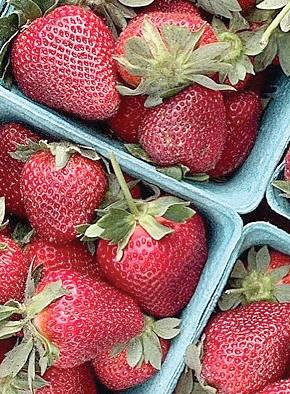
Lee Foy, Jr. In conjunction, the Foy Limited Partnership donated an additional 31 acres, making the total protected land 62 acres. Later that same year, the Foy Family designed and built the current trail system on an additional 65-acre tract and opened it to the public—however, those 65 acres remained privately held by the Foy Family, even as the location of the trailhead may have mistakenly suggested otherwise.
Last year, the Foy Family sold a total 242 acres to Mungo Homes for $16 million. The 62 acres of the Abbey Nature Preserve will continue to be protected, but the 65 unprotected acres will be clear-cut, destroying its forestland, walking trails and an important part of the Gullah Geechee Cultural Heritage Corridor.
Sadly, the impact to adjacent neighborhoods from the loss of tree cover will likely only become apparent after it is too late.
Sixty-five acres of forest has an estimated canopy of 8,494,200 sq. yards of leaves and needles, as well as many miles of roots. A forest canopy intercepts part of every rain, whether that’s a soft spring rain—or the deluge of a named storm. The canopy causes the water to evaporate again, pushing moisture away from the coast. What’s more, according to ecologist and author Peter Wholleben, in summer “trees use up to 8,500 cubic yards of water per square mile.”
Once the 65 acres is clear-cut, there will be no leaf barrier and no underground root system to act as nature’s pump. Impervious
ground created by dense development might as well be a concrete slab.

“That land is already adjacent to wetlands,” said Meyer. “How can anyone possibly expect it won’t flood?

“We want to work with Pender County to create a more sustainable and equitable path going forward,” she added, “hopefully before the bulldozers move in.”
For more information please write contact 4savescottshill@gmail.com or visit www.savescottshill.org.

green news
photo by Jennifer MacKenzie
Every Saturday 8am–1pm Year Round Located at: Tidal Creek Co-op 5329 Oleander Dr. Local Farmers Local Food SNAP/EBT Accepted thewilmingtonfarmersmarket@gmail.com www.thewilmingtonfarmersmarket.com
A section of Gullah Geechee Cultural Heritage Corridor, known as the Old Farm Road.
21 Cape Fear’s Going Green • Spring 2023 www.goinggreenpublications.com
NC Native Plant Society Chapter
Charley Winterbauer reports that the SE Coast Chapter of the North Carolina Native Plant Society is reorganizing and will be able to provide events more often.
Nancy Laffey has joined Winterbauer as Co-chair, and Nathan Bales is a new volunteer for the group. Kathy Curtis is coming on board in order to handle their Facebook postings.
On June 10, the group is hosting a plant walk in Moore’s Creek to be led by John Taggart. Sometime in May, there will be another plant walk at Wild Meadow Farm, a popular place to visit adjoining the Green Swamp.
If you join the state-wide Native Plant Society, you will automatically be included as a member in the chapter of your choice, at no additional charge.
Learn more at ncwildflower.org.
WHOLE WATER SOLUTIONS
wholewatersolutions.co


910.622.5620
Save Seeds Now for Fall Seed Swap
NC Native Plant Society
Update from Carol Bales, Master Gardener:
There will be another seed swap during the Native Plant Festival in September. If we get started now collecting seeds from native plants that we have in our gardens, we will have plenty to share and swap this fall. Seed swapping is a pleasurable activity that contributes to the health and wellbeing of our community.
We can learn to propagate the seeds we collect as well as sharing the fruits of our labor with friends, family and neighbors, thus helping to provide delicious vegetables, herbs and flowers as we harvest them during our long hot summer. Native plant seeds are usually very hardy, their viability lasting around three to five years.
We helped the Pender County master gardeners with a lovely seed swap that took place in the county library in Hampstead. About 45 gardeners attended
and brought seeds they had collected this winter. They were very curious about seeds from plants that they were not familiar with, and thus the event was very educational. Let’s all help with our seed swap this fall, and let’s begin right away collecting seeds to share with our fellow gardeners.
The meeting planned for April 27 at the Pine Valley Library will be an introduction to seed exchanging. We start with the collection. We will be furnishing envelopes that can be used to gather and store the seeds. We will go over the proper labeling so we will know the seeds and information on how they were gathered. Organizers hope this will be an annual event and also will enable members to gather seeds and do exchanges with neighbors and friends.
Join us at the Pine Valley Branch, New Hanover County Public Library at 3802 South College Road, Wilmington, NC 28412. The meeting will be in the Osprey Room from 5 to 6:30 p.m. on April 27.
For more information, contact Charley Winterbauer at cewinterbauer@gmail.com.
Quality drinking water in our community is the heart and sou Whole Water Solutions We pro bottled water quality drinking w at your tap affordably, so you c feel good about the water you'r drinking and the plastic waste you're avoiding.


Under sink RO system with inst $415
Local Residential Reverse Osmosis You Can Count O

gardening
22 www.goinggreenpublications.com Cape Fear’s Going Green • Spring 2023
events
Oregon Earth Summit (continued from page 12)
Community Lighthouse: New Orleans, LA
What do you do when the lights go out?
Abel Thompson and Asia Ognibene of Together New Orleans shared about their Community Lighthouse projects in a presentation called, “Neighborhood Resiliency Centers with Solar and Battery Powered Generators.” (You can watch this at time stamp 19:20 on the youtube video referenced above.)
Community Lighthouse: 85 institutions around New Orleans plus eight locations outside in different parishes (counties) are being equipped with solar panels and batteries—a plan for what to do when the lights do go out. Everyone in New Orleans will be within a 15-minute walking distance of one of these resilience hubs, in case of disaster or major power outage.
Together New Orleans (TNO) has a vision to build the nation’s largest net-
work of solar + storage resilience hubs at churches and community centers across south Louisiana.
DOE has selected Community Lighthouse as one of 14 projects nationally to receive technical support under its “Energy Storage for Social Equity” initiative, starting with the most vulnerable (e.g., people on medical equipment, people least able to leave in an emergency).
Together New Orleans equips institutions with solar panels. Locations provide cooling and heating stations, plus food preparation and distribution. See Togethernola.org to learn more.
Commissary Project: Warm Springs Indian Reservation, Warm Springs, OR

Chris Watson, executive director, Warm Springs Community Action Team shared a presentation, “The Commissary Project: Building Community & Climate Resilience
Dinosaurs Take Flight
The Cape Fear Museum is hosting an exhibit about the art of Archaeopterix. Dinosaurs are taken to new heights in this elegant traveling exhibition—engaging visitors at the intersection of art, science and history.
Archaeopteryx provides a critical bridge between dinosaurs and birds. Starting with the initial discovery in 1861, Archaeopteryx has been an integral part of the discussion of evolution, the origin of birds and the origin of flight. Scientists from across the globe have conducted extensive research to better understand this “missing link,” and studies continue still. Why did feathers first evolve? Did it fly?
Dinosaurs Take Flight combines original artwork with fossils, replica skeletons, hands-on activities and interactive media to tell the amazing story of the evolution of flight.
Dinosaurs Take Flight is a traveling exhibit organized by Silver Plume Exhibitions and the Yale Peabody Museum of Natural History.
Cape Fear Museum is located at 814 Market Street, Wilmington, North Carolina. The Museum is open Tuesday through Saturday, 9 a.m. to 5 p.m. The Archaeopterix exhibit will be on view through May 14, 2023.
Learn more at nc-newhanovercounty.civicplus.com/2322/ Dinosaurs-Take-Flight-traveling.
on the Warm Springs Reservation.” (This can be seen at time stamp 40:00 on the youtube video.)
Because nine out of ten dollars are spent off the reservation, which is home to Wasco and Paiute tribes, this group has restored their commissary as a business incubator to encourage business development . It will create provide training and keep jobs and money on the reservation, and has room to house multiple native-owned businesses. The commissary will become an economic engine to nurture nativeowned businesses and entrepreneurs.
See warmspringscommissary.org to learn more about what this project is anticipated to do for the community.
At summit end, people were encouraged to form teams of three or more to meet and consider how to put into practice the “building neighborhood climate resilience” ideas that had been discussed at the summit.

Let’s Make Green Happen! Simple, Safe, Sustainable Solutions Free Consultations Residential & Commercial Services: • Custom Compost Solutions • Custom Raised Garden Beds • Green Landscape Consulting • Soil Analysis & Prescriptive Solutions • Natural Biting-Insect Deterrent Programs • Custom Worm Bins We Use Worms • jamestroy@weuseworms.com Farm Fresh: • Worm Castings • Worm Juice (liquified worm castings) • Vermicompost 910-547-0500
23 Cape Fear’s Going Green • Spring 2023 www.goinggreenpublications.com
birding
Burnt Mill Birding
Cape Fear Bird Observatory (CFBO) led a bird walk along Burnt Mill Creek on March 7, 2023, led by Jill Peleuses of Wild Bird & Garden and Evan Buckland, Managing Director of CFBO.
The group assembled at the Port City Java at 21st and Market Streets in Wilmington and headed out north along the creek. Participants included birders who were hoping to add species to their personal “life list” (the list of all the birds one has ever seen); others were just enjoying learning a little more about local birds. They traveled at a slow stroll characteristic of birders scanning the trees and shrubbery and pausing often to look through binoculars and the leaders’ spotting scopes. Buckland recorded all the species spotted; she later reported that the group had started at 7:54 a.m., walked a total of 2.19 miles in 197 minutes and recorded seeing 40 different kinds of birds.
Buckland used her phone to record all sightings on her eBird account, and later
shared the online list with those in the group who wanted it. This allowed anyone who wanted to “accept” the checklist, so that all the birds recorded during the walk would be added to their personal list on eBird. eBird is a citizen science app one can use on a computer or phone to record birds one has seen.*
The group saw:
1 Wood Duck
1 Mourning Dove
1 Great Blue Heron
7 Turkey Vulture
1 Cooper’s Hawk
1 Accipiter sp.
1 Bald Eagle
2 Red-shouldered Hawk
2 Red-tailed Hawk
1 Belted Kingfisher
1 Yellow-bellied Sapsucker
2 Red-bellied Woodpecker
4 Downy Woodpecker
1 Pileated Woodpecker
2 Northern Flicker
1 Eastern Phoebe
2 Blue-headed Vireo
6 Blue Jay
3 American Crow
2 Fish Crow
8 Carolina Chickadee
1 Ruby-crowned Kinglet
3 Brown-headed Nuthatch
3 Blue-gray Gnatcatcher
6 Carolina Wren
4 European Starling
2 Gray Catbird
2 Northern Mockingbird
5 Eastern Bluebird
15 Cedar Waxwing
3 House Sparrow
2 House Finch
2 White-throated Sparrow
1 Song Sparrow
1 Eastern Towhee
7 Red-winged Blackbird
1 Black-and-white Warbler
1 Pine Warbler
10 Yellow-rumped Warbler
5 Northern Cardinal
Total Number of Taxa: 40
The March walk was a fundraiser for the Cape Fear Bird Observatory, a not-forprofit organization offering programs for bird science and research in our community. Learn more about their work at www. capefearbirdobservatory.org. They and Wild Bird & Garden have several other birding trips planned. Find out what they’re doing at the Observatory website or at the new Wild Bird & Garden website, which is www.wildbirdandgarden.com.
*Note: Our publisher, who participated in the walk, was able to accept the shared list of 40 species so it would register on her own eBird account, but was able to delete the eight that had been seen by members of the group but not by her. That way she was credited with having seen just the 32 species she had seen herself.
New Website for WB&G
Wild Bird & Garden has a new website: wildbirdandgarden.com. Sign up for their newsletter to stay current on events planned, sales of binoculars and other bird supplies and native plant sales.
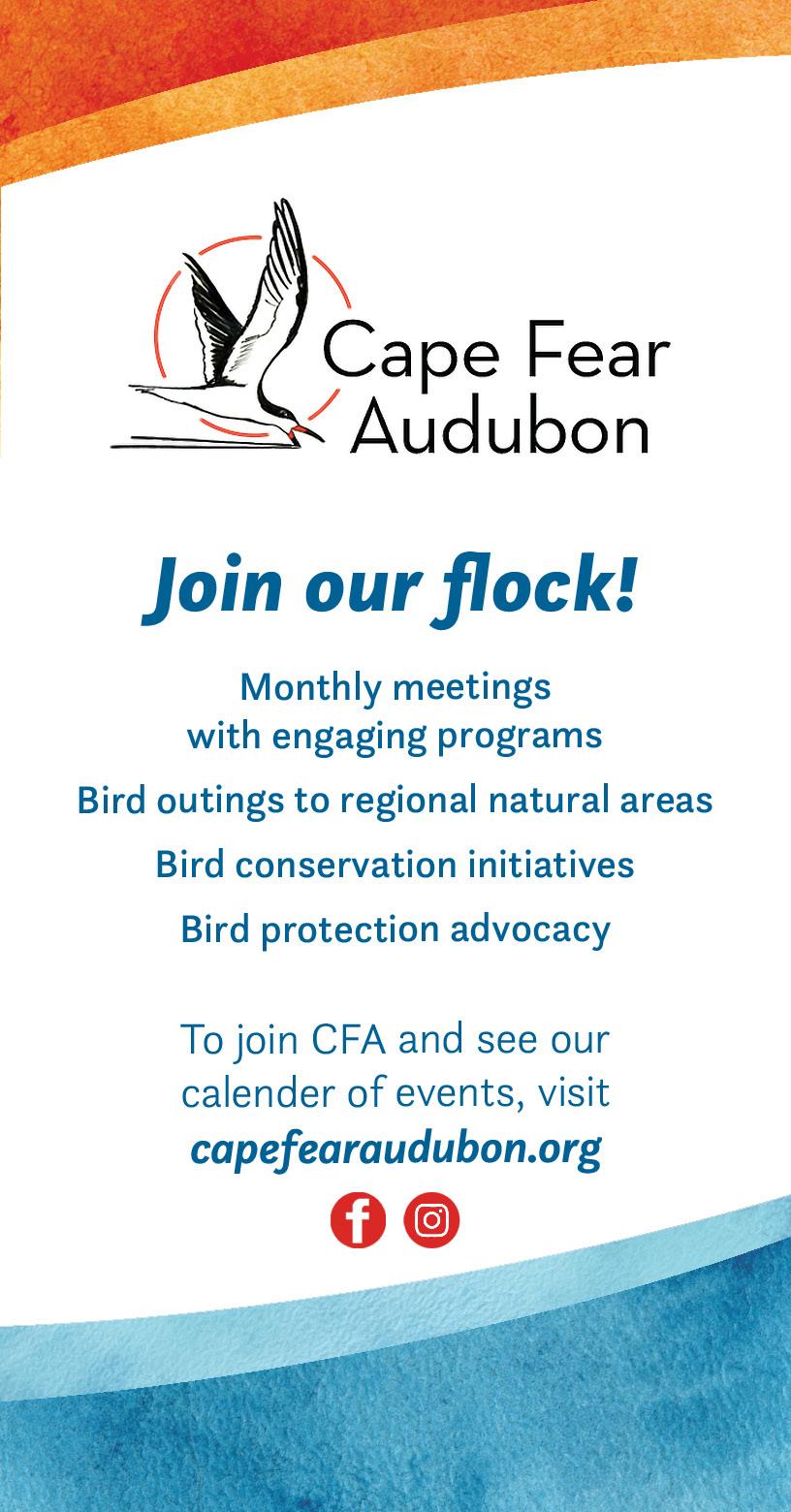
Calling All Birders
Global Big Day is an annual celebration of the birds around you. No matter where you are, join in virtually on May 13, help celebrate World Migratory Bird Day and share the birds you find with eBird. Learn more at the eBird website: ebird.org.
Results from the 2023 Great Backyard Bird Count
Between February 17-20, more than 555,000 people around the world contributed 390,652 eBird checklists and shared 372,905 Merlin bird identifications during the 2023 Great Backyard Bird Count, delivering a record-breaking jump in participation over previous years as well as some interesting and unusual species highlights. Visit birdcount.org to learn how to participate in next year’s event.
Going Green welcomes editorial contributions from the community. If you have an environmental story you’d like to tell, contact us and we’ll email you our “Contributor Guidelines.” Email Publisher@GoingGreenPublications.com or call (910) 547-4390.
24 www.goinggreenpublications.com Cape Fear’s Going Green • Spring 2023
2023 Festivals—Wilmington Earth Day and VegFest
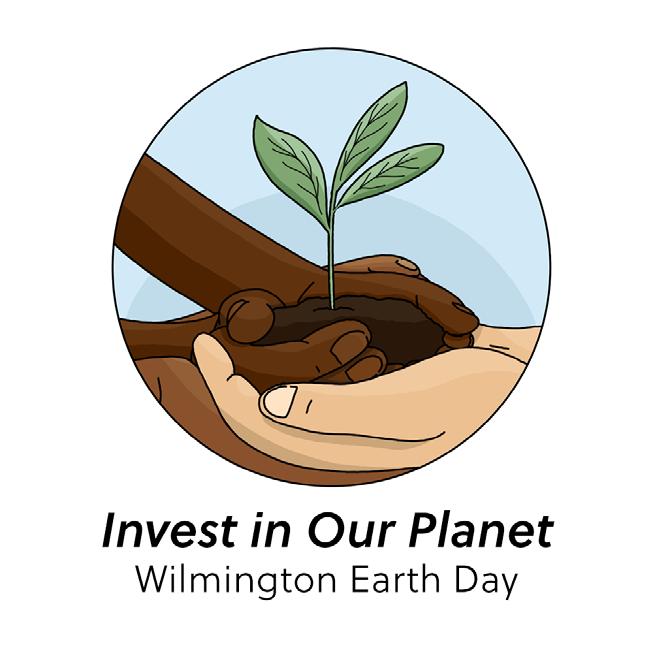

April 22–23 is the weekend to be in Wilmington. Enjoy the Earth Day Festival on Saturday and Wilmington Vegfest on Sunday.
2023 Wilmington Earth Day Festival
Wilmington Earth Day Alliance invites you to the annual Wilmington Earth Day Festival on Saturday, April 22, from noon to 6:00 p.m. in Long Leaf Park. It’s a fun-filled afternoon of live music, good food and environmental information and activities for the whole family—and it’s free!
This year’s theme is “Invest In Our Planet.” More than 50 environmentallyminded exhibitors and vendors will be there, explaining issues that affect our environment and illustrating how you can get involved.
Come out to enjoy live music, dancing on the lawn, food trucks, and a Kids’ EcoZone for children to engage in environmental activities. One lucky raffle prize winner will go home with a Hurricane Kayak donated by Great Outdoor Provision
Co. There will be recycling and composting stations to help this be a zero-waste event. Bring your own refillable water bottle! T-shirts featuring the 2023 festival logo will be for sale.
“Earth Day happens during my favorite time of year,” said Festival Volunteer Coordinator Jayasree Kandasamy. “The Cape Fear community comes together to support sustainability efforts and share the love. Our Wilmington Earth Day Festival is a great time for family-friendly fun in one of Wilmington’s iconic parks!”
Enjoy live music and entertainment all day:
12 to 1:45 p..m.: The Delia Stanley Duo
1:45 to 2 p.m.: Infinite Spins
2 to 3:45 p.m.: Brett Johnson and Nimara Snyder
3:45 to 4 p.m.: Infinite Spins
4 to 5:45 p.m.: Ashby and the Business End Food trucks will offer soul food BBQ from Webo’s Food Truck & Catering; Latin American plant-based street food from RiCoQui; smash burgers and subs from Smash & Dash; and hot dogs and chips from King of the Ring Hotdog Cart. Beverages available for purchase include
beer from Edward Teach Brewery, Hi-Wire Brewing, and Good Hops Brewing; wine from Noni Bacca Winery; fruit smoothies from Smart Smoothies; and kombucha and hard kombucha from Panacea Brewing Company. Dessert drinks and s’mores will be available from Chocolate and S’more.
Culligan Water will provide drinking water, and guests are encouraged to bring their own reusable water bottles for this. The festival strives to be zero-waste: food scraps will be composted and festival beverage cups will be reusable. Food trucks will offer vegan and vegetarian options and will serve their food in compostable packaging and offer compostable cutlery.
The Festival will be held at Long Leaf Park, 314 Pine Grove Drive, Wilmington. Parking is free on site and trolley shuttles will run from the south entrance of the old New Hanover County Government Center at 230 Government Center Drive. Travel on Wave Transit will be free all day. Leashed pets are welcome in the grassy areas (not inside the tents or in the food area).
This year the Earth Day Alliance is once again joining forces with Wilmington
festivals
Wilmington Earth Day Festival wilmingtonearthday.com Sat. April 22 ~ Noon–6pm Long Leaf Park, Wilmington FREE! Environmental Information & Activities 50+ Exhibitors Live Music, Food Trucks, Raffle Prizes, Kids’ EcoZone On-Site Free Parking & Shuttle
25 Cape Fear’s Going Green • Spring 2023 www.goinggreenpublications.com
(continued on page 26)
festivals
Wilmington Earth Day and VegFest (continued)
VegFest (wilmingtonvegfest.com). VegFest is on Sunday, April 23, at Legion Sports Complex, making it a perfect weekend to come to Wilmington for both events.
FESTIVAL SPONSORS: Edward Teach Brewery, Good Hops Brewing, Hi-Wire Brewing, Coyle Solar, City of Wilmington Stormwater Services, New Hanover County Parks and Gardens, Keep New Hanover Beautiful, Heal Our Waterways, Hurricane Kayaks, Great Outdoor Provision Co., Boot Scrap Productions, Cape Fear’s Going Green, Office Depot, Wave Transit, Wilmington Compost Company, Culligan Water, and Modern Sound and Staging.
For details: www.wilmingtonearthday. com or (910) 798-7130.
Wilmington VegFest 2023
The 2023 Wilmington Vegfest will be held at Legion Sports Complex on the Backfield (behind the buildings visible from Carolina Beach Road).
You don’t want to miss this fun event. Mark your calendars and get your VIP ticket or donate ahead of the festival. Ticket link coming soon!
The festival is free, but this year organizers are requesting a suggested donation for the festival. Please donate $5 or more to get a free ticket; purchasing your ticket in advance helps the vendors know how much to prepare ahead of the festival.
$25 VIP tickets can be purchased, and allow entrance to the event thirty minutes early—only 100 VIP tickets will be sold. VIPs will receive a cool reusable goody bag filled with items different from the general admission bags. Each VIP Entry you purchase also gets you entered into the raffle. Winners will be picked randomly after the festival and winners will be notified via email. Prize Packs are to be determined.
• Food Trucks
• Live Music
• Family Fun Zone
• Free Face Painting
• Vegan Food
• Shopping
Learn more about the Festival or sign up to volunteer at wilmingtonvegfest. com. Come out and support the vendors www.wildbirdandgarden.com
and plan on enjoying the music, too. The Family Fun Zone is perfect for children of all ages and includes life-sized games, coloring, basketball hoop game and more!
Southport NatureFest
The 2023 Southport NatureFest, running from April 25–29, offers a chance to learn more about out local flora, fauna and wildlife. Events start on Tuesday, the 25th with a presentation on oysters and the St. James Living Shoreline project. Thursday, Bald Head Island Conservancy Educator Jennifer Wiggen will explain the use of iNaturalist and lead a group walk to demonstrate how to use it in this year’s City Nature Challenge—a competition to see how many different kinds of wildlife you can find between April 28 and May 1.
Friday offers a walking tour of the Green Swamp with Roger Shew, followed by a noontime City of Southport Arbor Day celebration. Saturday, April 29 environmental non-profits will have exhibitor booths from 8:30 a.m. to 12:30 p.m. at Taylor Field Park, 409 E. Nash Street.

The detailed schedule of activities is published in the April issue of Southport Magazine, so look there to find your opportunity to learn more about our local flora, fauna and wildlife. (southportmag. com/southport-naturefest-2023/) Some events require registration; you can sign up on facebook.com/southportnaturefest.
April 21 MarineQuest Expo Celebrates STEM
Celebrate science, technology, engineering, art and math with UNCW! Join us to investigate the intersection between science and art at this year’s NC Science Festival expo. UNCW STEM faculty and researchers will partner with artists of all mediums to showcase the STEM research taking place at UNCW and within our regional community. At the event, attendees will meet STEAM professionals and learn what they specialize in through the artist’s eye and hands-on activities targeting student interests. Use problem-solving approaches and receive clear instruction to (continued on page 31)
26 www.goinggreenpublications.com Cape Fear’s Going Green • Spring 2023
Cape Fear’s Going Green Environmental
Book Club!
The second Tuesday of every month. Come join us 6–8 p.m. at Old Books on Front Street • 249 No. Front Street • Wilmington
Now in its twelfth year, the Environmental Book Club is organized by Cape Fear’s Going Green and hosted by Old Books on Front Street. Our Book Club meets the second Tuesday evening of the month inside Old Books on Front Street. Social time is at 5:30, discussion begins at 6:00 and runs approximately two hours. The bookstore closes at 8:00 p.m. There’s no longterm commitment: you can come when the book being discussed is a title that interests you! (We do hope you’ll read the book before you come, as it enriches the conversation.)

We will continue offering a hybrid Zoom + in-person gathering while the pandemic continues. The first ten people to RSVP can attend in person if they wish. (We follow or exceed local guidance on masking and distancing.) Anyone wishing to join via
Zoom is invited to do so: RSVP and we’ll send you the meeting log-in details. RSVP by email to Valerie_L_ Robertson@msn.com or call (910) 547-4390.
Sign up for the Going Green newsletter, and let us know if you’d also like to be on the email list for Environmental Book Club news. Email Publisher@GoingGreenPublications. com or sign up directly on our website: GoingGreenPublications. com. Questions about Book Club? Call (910) 547-4390.
Old Books on Front Street offers a discount on new copies of our Book Club selections (and to anyone arriving by bicycle). Call ahead to make sure they have your book in stock: (910) 762-6657.
NOTE: Any changes to schedule (whether for weather or any other reason) will also be posted on our online calendar, so please check the day of the event to make sure. Just go to the online calendar at www. GoingGreenPublications. com and click on the meeting date to pull up details. Or call us, at (910) 547-4390.
Sign up for the Environmental Book Club mailing list, and we’ll share details about this year’s books as well as tips for accessing them as audiobooks or eBooks through New Hanover County Public Library, using Hoopla or Libby.
2023 Book Titles
January 10, 2023
The Journeys of Trees:
A Story about Forests, People, and the Future
Zach St. George
February 7 (A FIRST Tuesday this month only)
On Fire:
The (Burning) Case for a New Green Deal

Naomi Klein
March 14
Saving Us:
A Climate Scientist’s Case for Hope and Healing in a Divided World
Katharine Hayhoe
April 11
Scientist:
E. O. Wilson: A Life in Nature
Richard Rhodes
May 9
Saving the Wild South:
The Fight for Native Plants on the Brink of Extinction
Georgann Eubanks
June 13
Fuzz: When Nature Breaks the Law

Mary Roach
July 11
Fresh Banana Leaves: Healing Indigenous Landscapes Through Indigenous Science
Jessica Hernandez
August 8
The World Is Blue:
How Our Fate and the Ocean’s Are One
Sylvia A. Earle
September 12
A Blue New Deal:
Why We Need a New Politics for the Ocean
Chris Armstrong
October 10
Inconspicuous Consumption: The Environmental Impact You Don’t Know You Have
Tatiana Schlossberg
November 14 (two books this month)
Fen, Bog and Swamp: A Short History of Peatland Destruction and Its Role in the Climate Crisis
Every fall our group selects the books we’ll discuss in the coming year. Here are two titles we thought looked very interesting, even though we didn’t have room for them on the current year’s list. Perhaps in the following year?
Nature’s Best Hope: A New Approach to Conservation that Starts in Your Yard
Douglas W. Tallamy
Green Metropolis: Why Living Smaller, Living Closer, and Driving Less Are the Keys to Sustainability
David Owen
Annie Proulx, & The Great Dismal
Bland Simpson
December 12
The Control of Nature
John McPhee
January 9, 2024
The Insect Crisis: The Fall of the Tiny Empires That Run the World
Oliver Milman
20 www.goinggreenpublications.com Cape Fear’s Going Green • Winter 2022–23 15th Anniversary Issue
27 Cape Fear’s Going Green • Spring 2023 www.goinggreenpublications.com
All the words in the crossword can be found somewhere in the pages of this issue. The answer key appears on page 30.
Crossword
4. An invasive species swimming off of North Carolina's coast.
6. An area for kids at the Wilmington Earth Day Festival.
8. A protected and stabilized shoreline that is made of natural materials such as plants, sand, or rock.
11. The city in North Carolina that is home to the Green Swamp.
12. A thing that discourages someone or something from doing something.
13. A recycling program that recycles inkjet cartridges.
1. A planned space set aside for the growing, displaying, and admiring plants.
2. A parasite carried by cats.
3. When an animal is active during the night and sleeps during the day.
5. The surname of UNCW professor with his own documentary.
7. The expression of reverence and adoration for a deity
9. Belonging naturally; essential.
10. The date at which the sun crosses the celestial equator
14. A naturally occurring element that smells like rotten eggs.
Across
Down
15. A sport that involves riding a wave toward the shore on a board.
1 2 3 4 5 6 7 8 9 10 11 12 13 14 15
28 www.goinggreenpublications.com Cape Fear’s Going Green • Spring 2023
Crossword by Shelby Diehl.
Introducing Cape Fear’s Going Green’s Interns
Morgan Greene (left) is a senior at the University of North Carolina Wilmington (UNCW) majoring in biology with a concentration in terrestrial and freshwater conservation and minoring in creative writing as well as coastal and environmental writing. As a Going Green contributor, her articles typically highlight beneficial insects in the Wilmington area. She also writes about various arthropods from fireflies to ghost crabs on her blog, The ArthroBlogger (thearthroblogger.com). When she’s not writing or studying, you may find Morgan visiting local beaches, museums and used bookstores.
Rachel O’Connor (right) has been this publication’s intern for Fall 2022 and into Spring 2023. She is obtaining her M.S. in Coastal and Ocean Policy at the University of North Carolina Wilmington (UNCW). Prior to that, she studied Marine Biology and International Studies at UNCW and participated in research in Benthic Ecology.
O’Connor loves everything oysters but is also interested in climate and national security. Look for her articles on the Blue Economy in this issue of Cape Fear’s Going Green.


When not studying and working, Rachel gardens, explores and learns languages.
Ask us about our internships!
Cape Fear’s Going Green offers a variety of unpaid internships. We work with students and members of the community who are eager to share information about local environmental projects. We can tailor the internship to fit the credit requirements of a college or university. Research and write articles, report on local community events, take photos, help with magazine circulation, sell advertising, represent us at environmental fairs, help organize our databases... Contact Valerie Robertson at publisher@goinggreenpublications.
Beth Ackerly (above) is studying environmental science at UNCW and will graduate in May 2023. She is a native Floridian and moved to Wilmington in 2020. She enjoys hiking, writing, music and spending time with her 6-year-old daughter, Luna. Luna is the inspiration for many of Beth’s projects, which center on introducing concepts of sustainability and environmentalism to young children and families.

green news
contributed photo Rachel O’Connor is a Going Green intern.
photo by Beth Acklery Beth Ackerly is a Spring 2023 intern with Going Green.
contributed photo Morgan Greene is a Spring 2023 intern with Going Green.
photo by Beth Ackerly Beth Ackerly is a Spring 2023 intern with Going Green.
Did You Know you can now submit your green events directly to us for consideration for our online calendar. Visit the calendar on goinggreenpublications.com and scroll to the form at the bottom. 29 Cape Fear’s Going Green • Spring 2023 www.goinggreenpublications.com
3. When an animal is active during the night and sleeps during the day
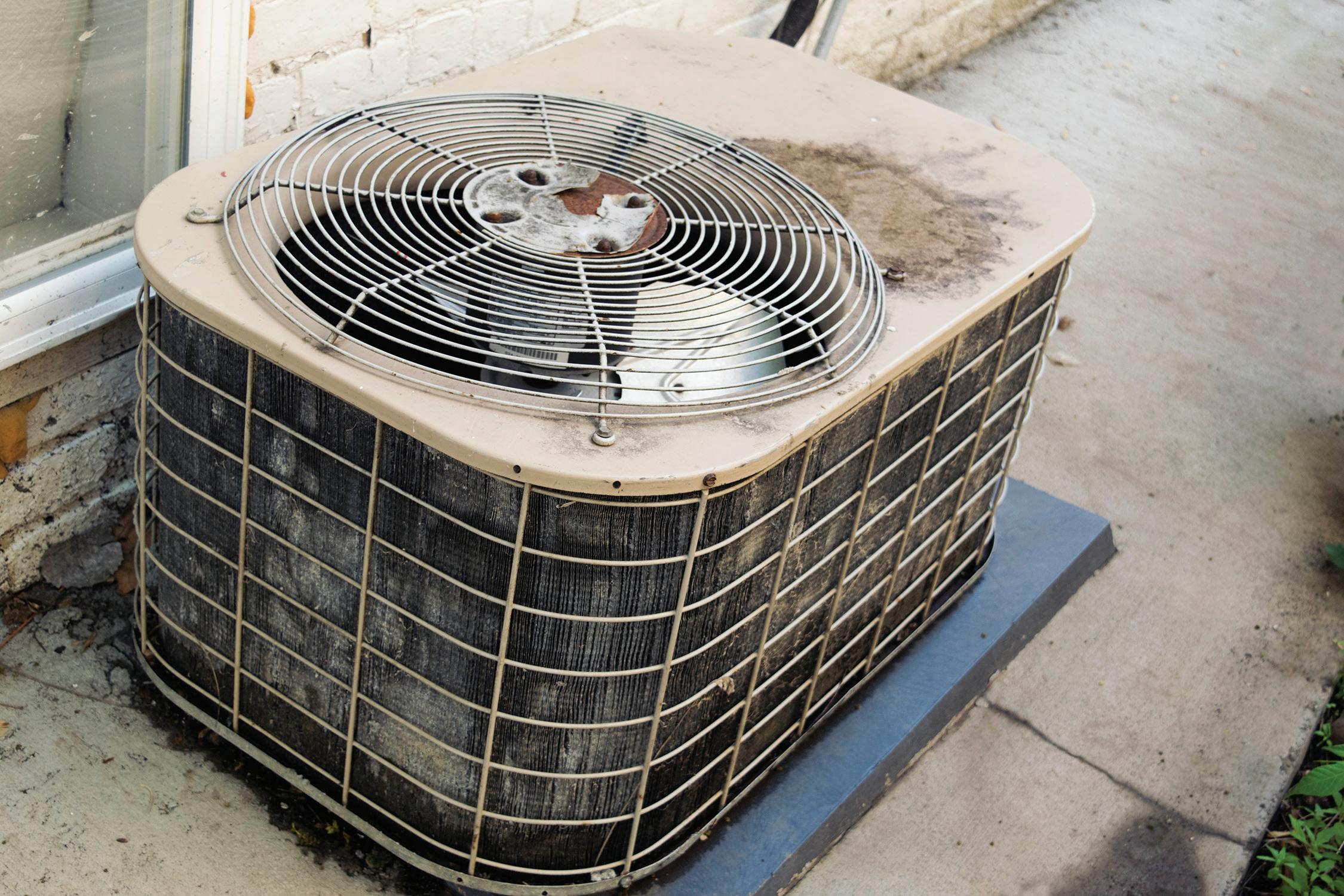
2. A parasite carried by cats.
1. A planned space set aside for the growing, displaying, and admiring plants.
8. A protected and stabilized shoreline that is made of natural materials such as plants, sand, or rock.
6. An area for kids at the ilmingtonW Earth Day Festival.
Crossword
4. An invasive species swimming fof of North Carolina's coast.
Answer Key for the Crossword on page 28.
ossAcr
Down
5. The surname of UNCW professor with his own 1 g 2 t a o 3 n r x 4 l i o n f i 5 s h d 6 e c o z o n e c h e p t 7 w e 8 l i v 9 i n g s h o r e l i n 01 e u o w n a q r r t s u n 11 s u p p l y 21d e t e r r e n t 31 e m p t i e 41 s 4 c a s h i o n u l i n s o l p s i x f i s 51 s u r f i n g c r
30 www.goinggreenpublications.com Cape Fear’s Going Green • Spring 2023
citizen science events
Arboretum Earns National Recognition
The New Hanover County Arboretum and N.C. Cooperative Extension has been honored by the American Public Gardens Association’s Awards Committee with the 2023 Sustainability Award. The award will be presented in early June at the association’s annual conference in Dallas-Fort Worth.
“We are humbled to receive national recognition for the work taking place here at the Arboretum,” said Lloyd Singleton, Director of the Cooperative Extension. “Our team is dedicated to a facility that continues to be at the forefront of environmental efficiency while serving as a showcase to our community of what sustainable practices look like and the positive impact they can have on the environment.”
The Sustainability Award is one of eight annual honors presented by the American Public Gardens Association, highlighting the work of public gardens throughout the country. The award recognizes a garden for its commitment
to promoting and using sustainable practices, as well as showing innovation in programming that educates the public on sustainability.



The Arboretum features a variety of initiatives aimed at encouraging and facilitating sustainable practices. A few of these include:
• The use of battery-powered equipment to reduce noise and emissions.
• Diversion of all organic waste produced on-site through collaboration with local composting facilities, as well as the annual pumpkin collection event.
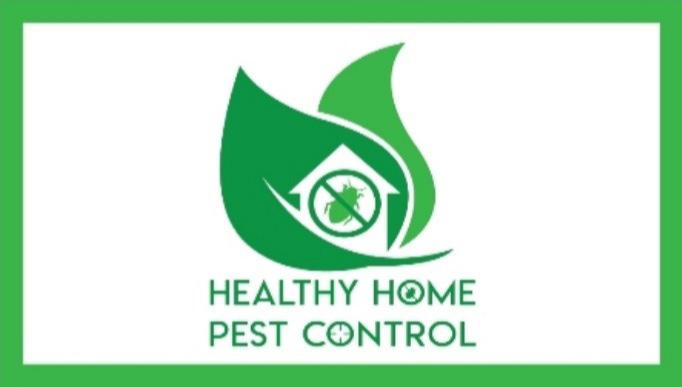
• The use of compostable single-use disposable plastics for all on-site events.

• Featuring a native plant garden with local plant species.
• Showcasing models of several innovative stormwater management techniques.
City Nature Challenge 2023
The biggest wildlife scavenger hunt of the year is right around the corner! The 2023 City Nature Challenge is a world-wide festival celebrating biodiversity. Join us in making citizen science observations from April 28–May 1 to showcase the amazing plants and wildlife of Coastal NC on a global stage.
All iNaturalist observations in NC’s coastal plain during the four days of the challenge will automatically be added to our region’s total species counts. This is our fourth year as a region, and we are competing with the Triangle, Charlotte Metro, Piedmont, and Western NC regions to document the most species and have the most participants. Get ready to get outdoors and help us make this the Coastal region’s best year yet!
Visiting www.citynaturechallenge.org will give you background on how it all works. If you’re in any of the following counties, your iNaturalist results will count towards the Coastal Plain count: Beaufort, Bertie, Bladen, Brunswick, Camden, Carteret, Chowan, Columbus, Craven, Currituck, Dare, Suplin, Gates, Greene, Hertford, Hyde, Jones, Lenoir, Martin, Northampton, Onslow, Pamlico, Pasquotank, Pender, Perguimans, Pitt, Robeson, Sampson, Tyrrell, Washington and Wayne.
Here’s the link to the 2023 Team Coastal NC Bioblitz page: www.inaturalist.org/projects/nc-bioblitz-2023-team-coastal-nc. Note: Our publisher will be participating: her name on iNaturalist is ggnature4, so see whether she makes it onto this year’s leaderboard!
For more information, visit the New Hanover County Arboretum and N.C. Cooperative Extension online at nhcgov.com/161/ Arboretum-NC-Cooperative-Extension.
MarineQuest Expo (from page 26)
ensure that those with learning differences can fully participate in the event and gain an impactful experience for all.
This free event will be held on Friday, April 21, 2023 from 3:30 p.m. to 7:30 p.m., rain or shine. The event will be at the UNCW Watson Education Building, 970 Reynolds Drive, Wilmington. PT’s food and Kayla’s Kones ice cream truck will be on site.
Interested in being a part of the event?
STEM organizations interested in hosting a exhibit/interactive station, or artists interested in collaborating, please fill out the survey on the website: uncw.edu/ marinequest/expo2023.html
31 Cape Fear’s Going Green • Spring 2023 www.goinggreenpublications.com
Barred Owls
The Watchers of the Forest
Barred Owls (Strix varia) are native to southeastern North Carolina. These large owls live all along the eastern seaboard and up into parts of Canada. These amazing creatures are in the bird family, meaning that they lay eggs. No wonder these magical owls love to hang out in large trees: the nice branches provide a wonderful place to nest!
Did You Know?
When you think of a bird, you probably think of something small like a finch or cardinal. But Barred Owls are anything but little! These amazing birds are larger than crows but smaller than geese. They are still tinier than the largest of North America’s owls— the Great Horned Owl—but bigger than the Barn Owl. In the world of owls, they are a nice medium size.
Barred Owls are very pretty given their large dark eyes, white and brown feathers and striking yellow beak. They eat a variety of foods, and their favorite meal consists of rodents or other small mammals. However, they have been known to eat fish, reptiles and even other birds.
Circle the Correct Answer
Which of the following animals is a bird?
Bat Penguin Flying Squirrel
Barred Owls are nocturnal, which means that they spend most of their day sleeping in trees. You may occasionally hear them during the daytime, but for the most part you will see them at dawn and dusk. Nocturnal animals are active at night, which is when they hunt for food. For this reason, Barred Owls have evolved to have large eyes that allow them to see well in the dark.
Since Barred Owls spend most of their lives in mature trees, southeastern North Carolina is a nice place for them to live. The region’s mature pine forests and protected natural areas make for great habitats.
True or False?
Owls can turn their heads 360 degrees (a complete circle).
What Can You Do to Help Barred Owls?
Barred Owls must have trees in order to survive. These trees must be big enough to protect their young from predators and provide enough cover to allow the owls to hunt their food. Natural spaces are becoming few and far between in cities like Wilmington, so protecting local green spaces is very important to help these owls remain in the southeast. Barred Owls eat a variety of animals, but their favorite are rodents. When humans put out poison to get rid of rodents like mice, that poison can make the mice more likely to get caught by predators like Barred Owls. On average, a Barred Owl eats about twelve mice every night! The more poisoned mice an owl eats, the more that poison builds up in its body, which can eventually kill the owl. It is important to remind the adults in your life that setting out poisons instead of using natural deterrents for pest animals hurts not only those animals, but also all the animals that eat those creatures.
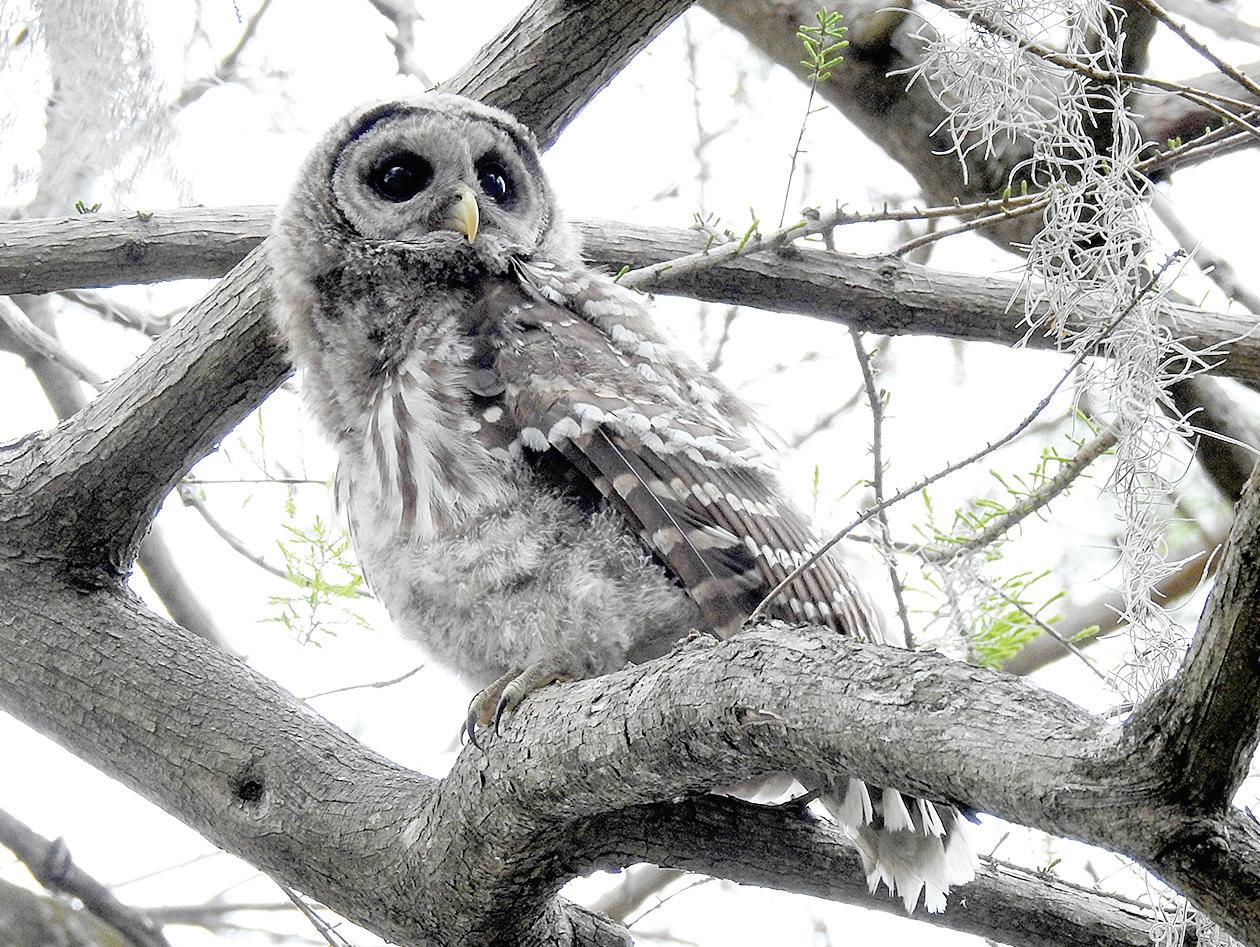
kids korner
Photo by Dick Hayes
This young Barred Owl has some adult feathers and is old enough to fly short distances, but still depends on its parents to bring it food. This photo was taken at dusk, the time of day youngsters emerge from their daytime resting places and wait hopefully for one of their parents to bring food. You can see some of the soft downy feathers remain on its belly.
Answer Key
or False?—False
the Answer—Penguin. 32 www.goinggreenpublications.com Cape Fear’s Going Green • Spring 2023
Kids Korner is brought to you by Shannon Bradburn Pragosa.
True
Circle

















 By Beth Ackerly
By Beth Ackerly

























 by Jennifer Mackenzie
by Jennifer Mackenzie


















































